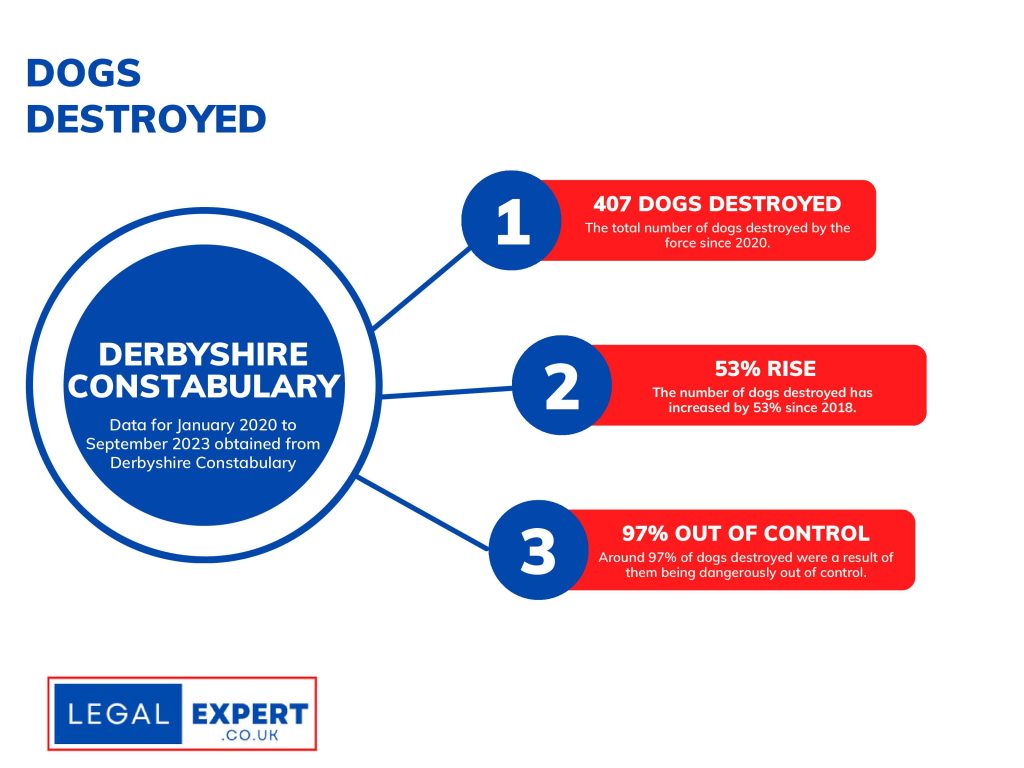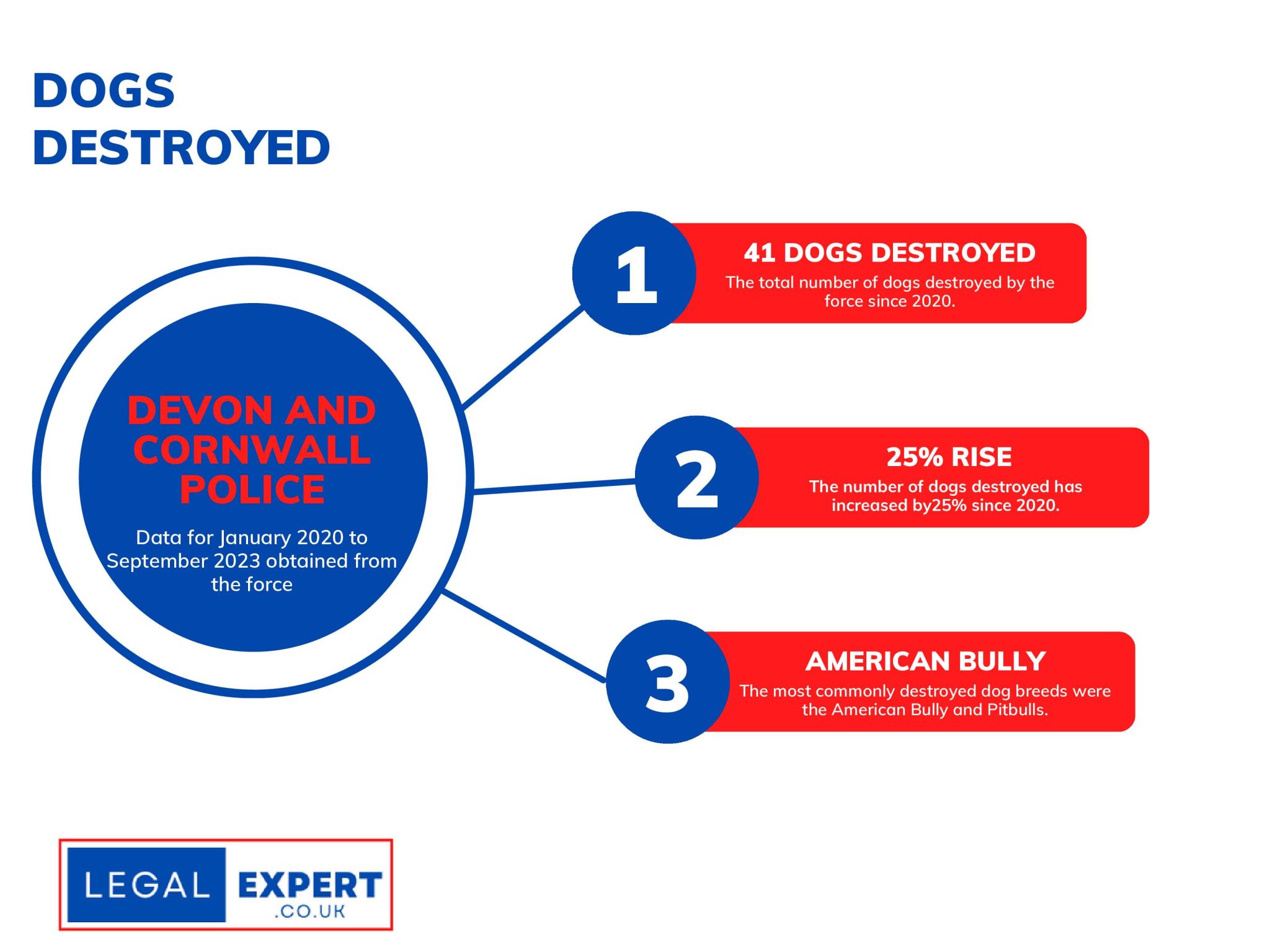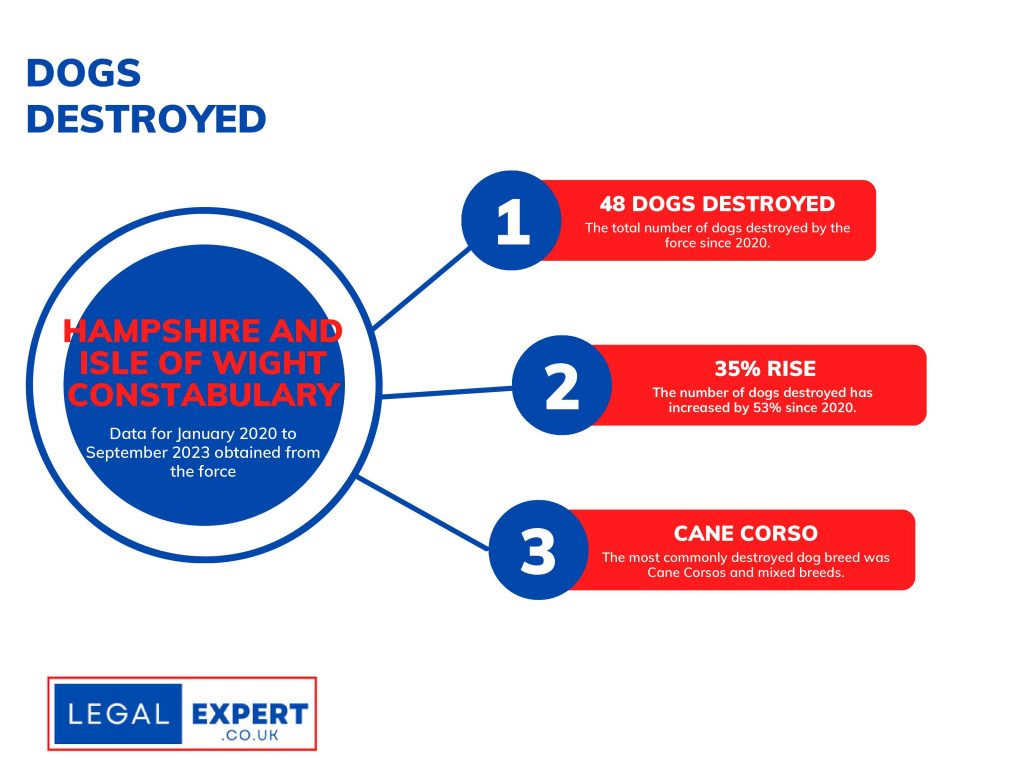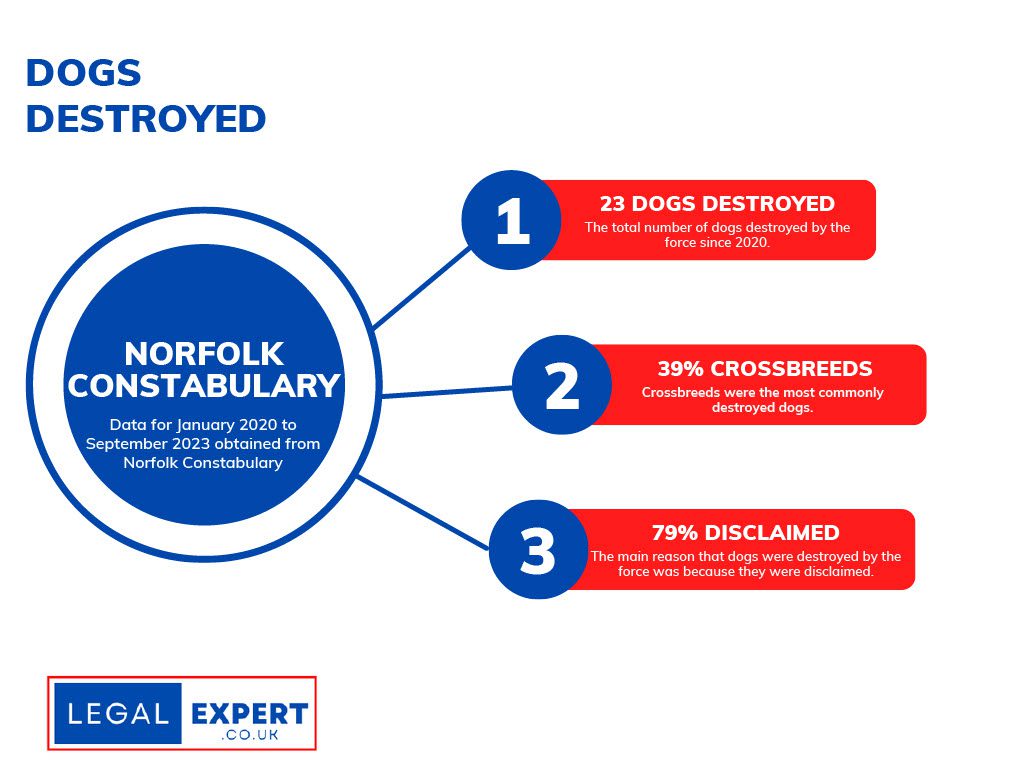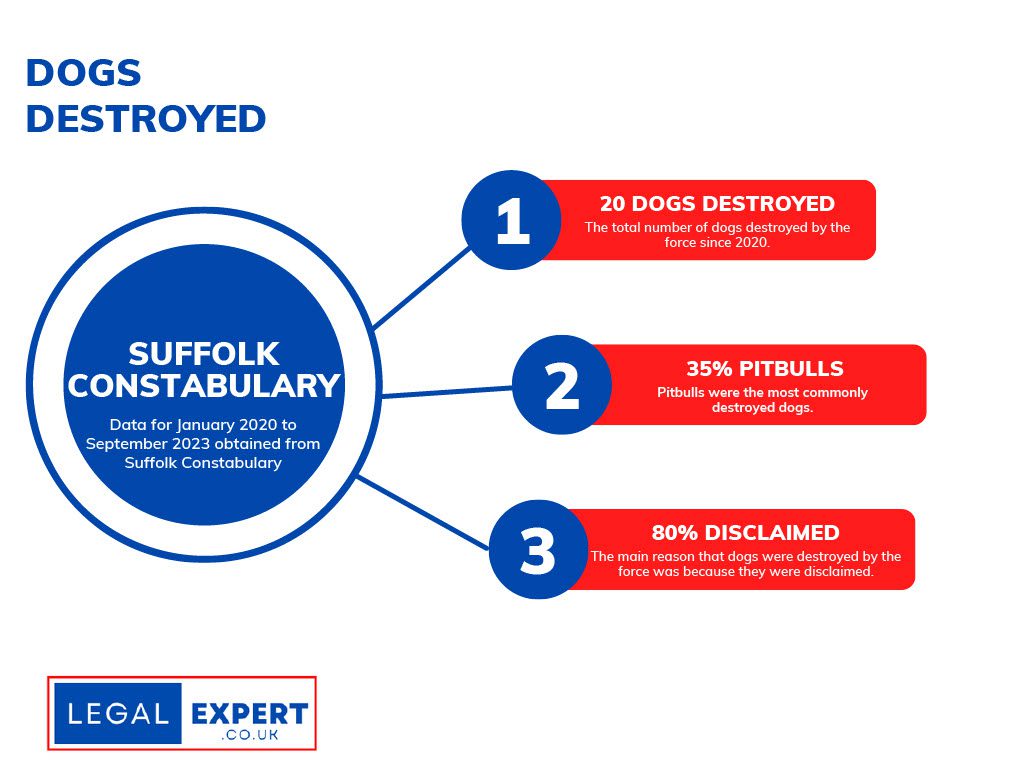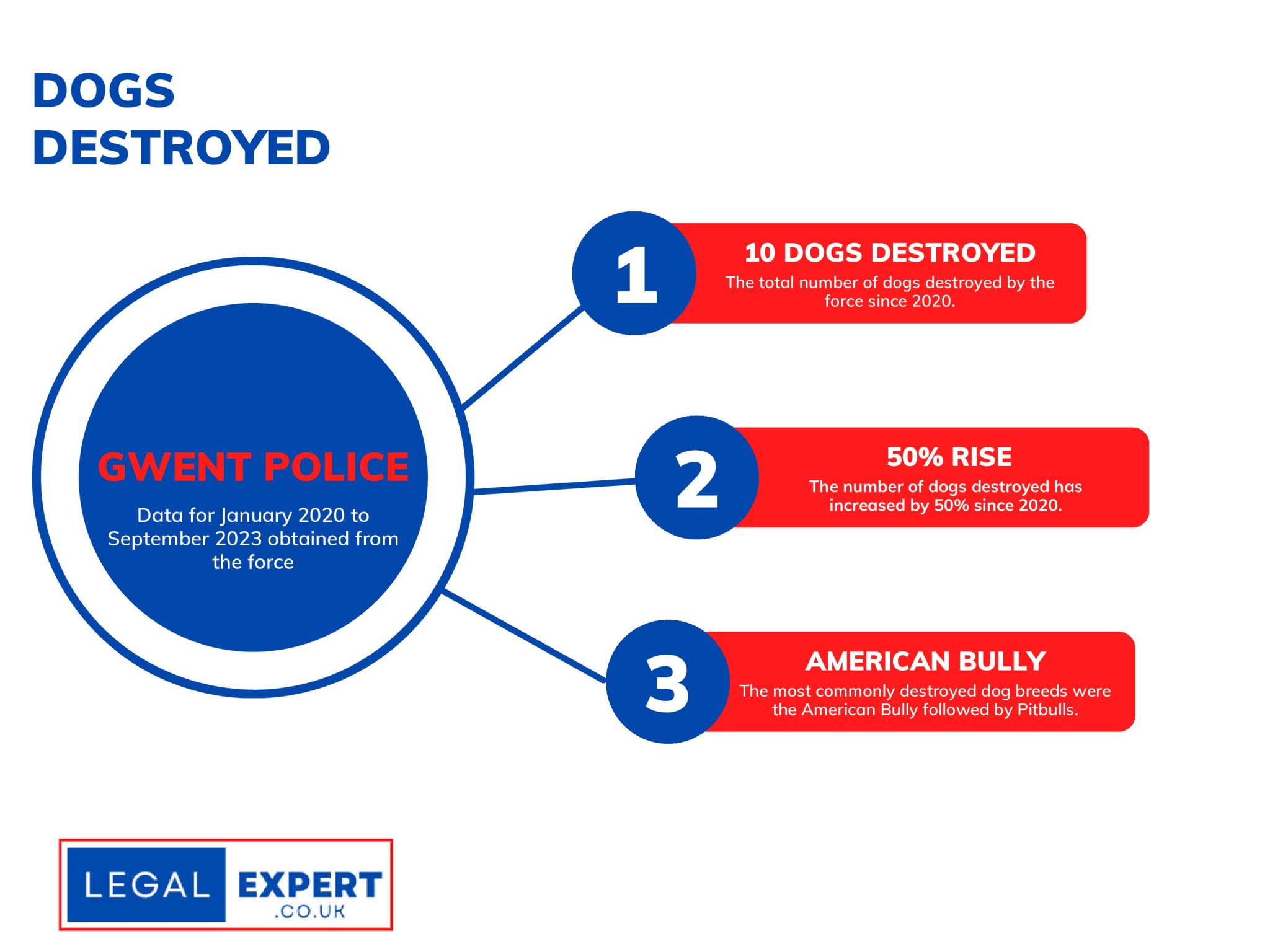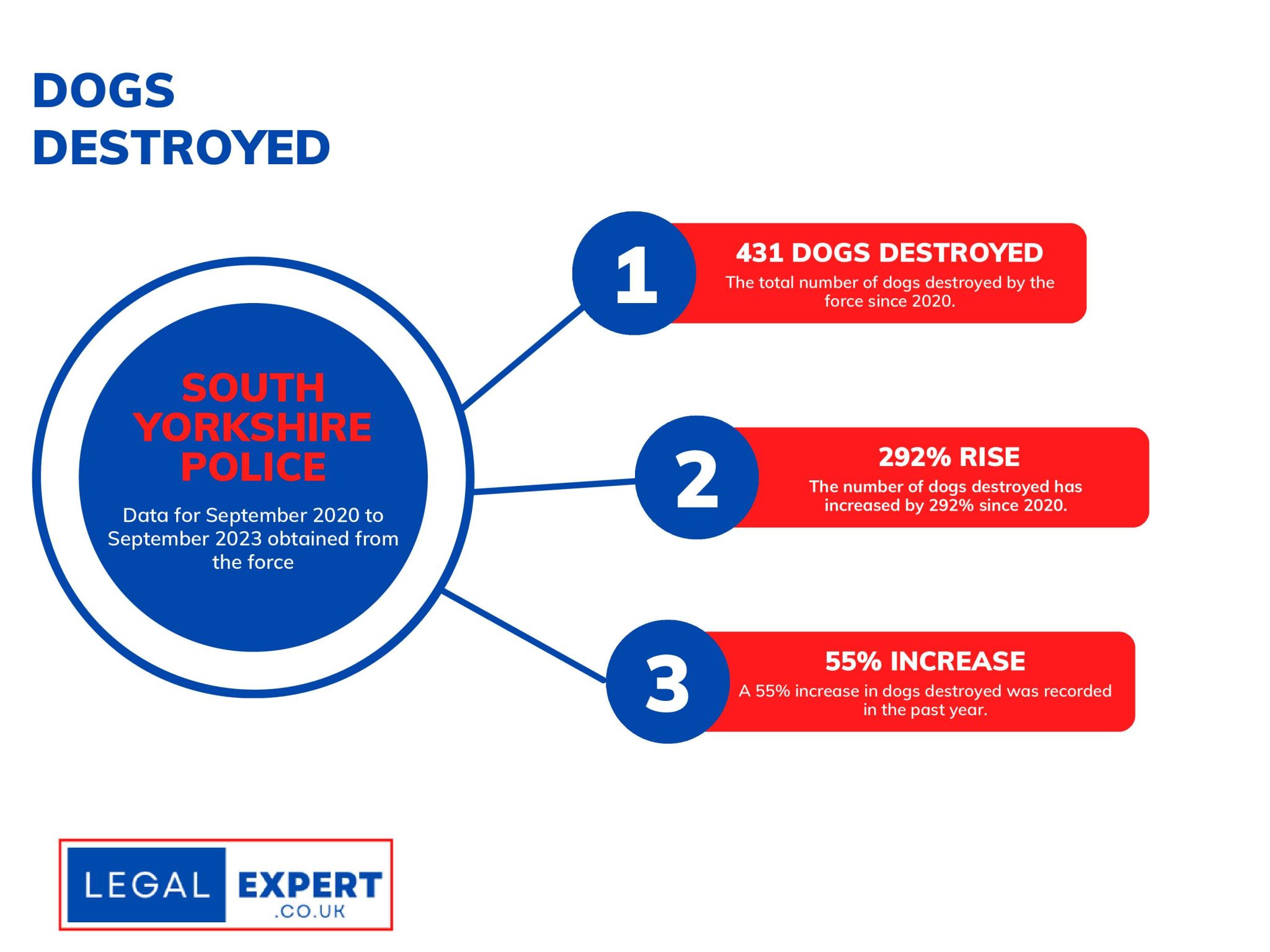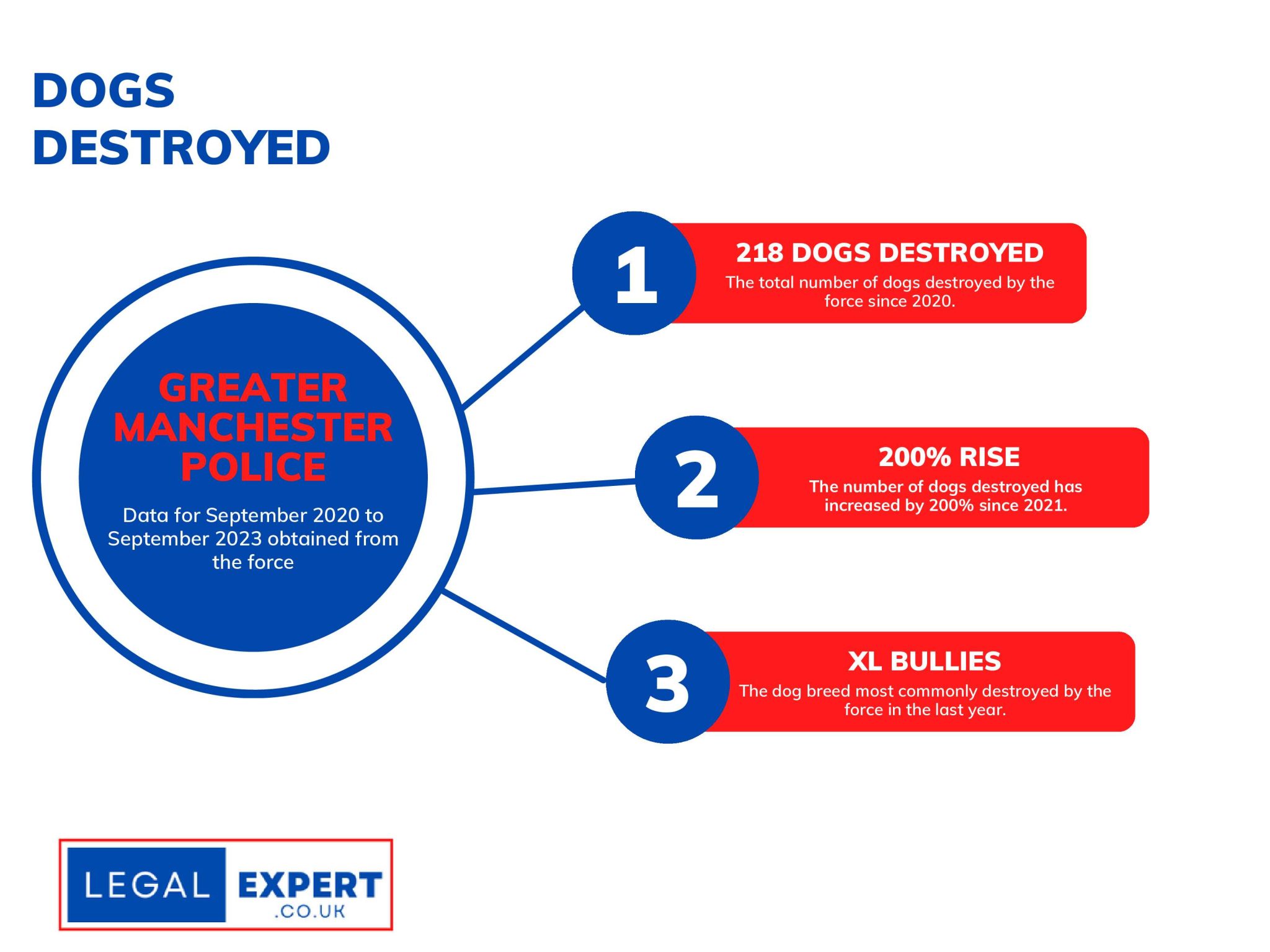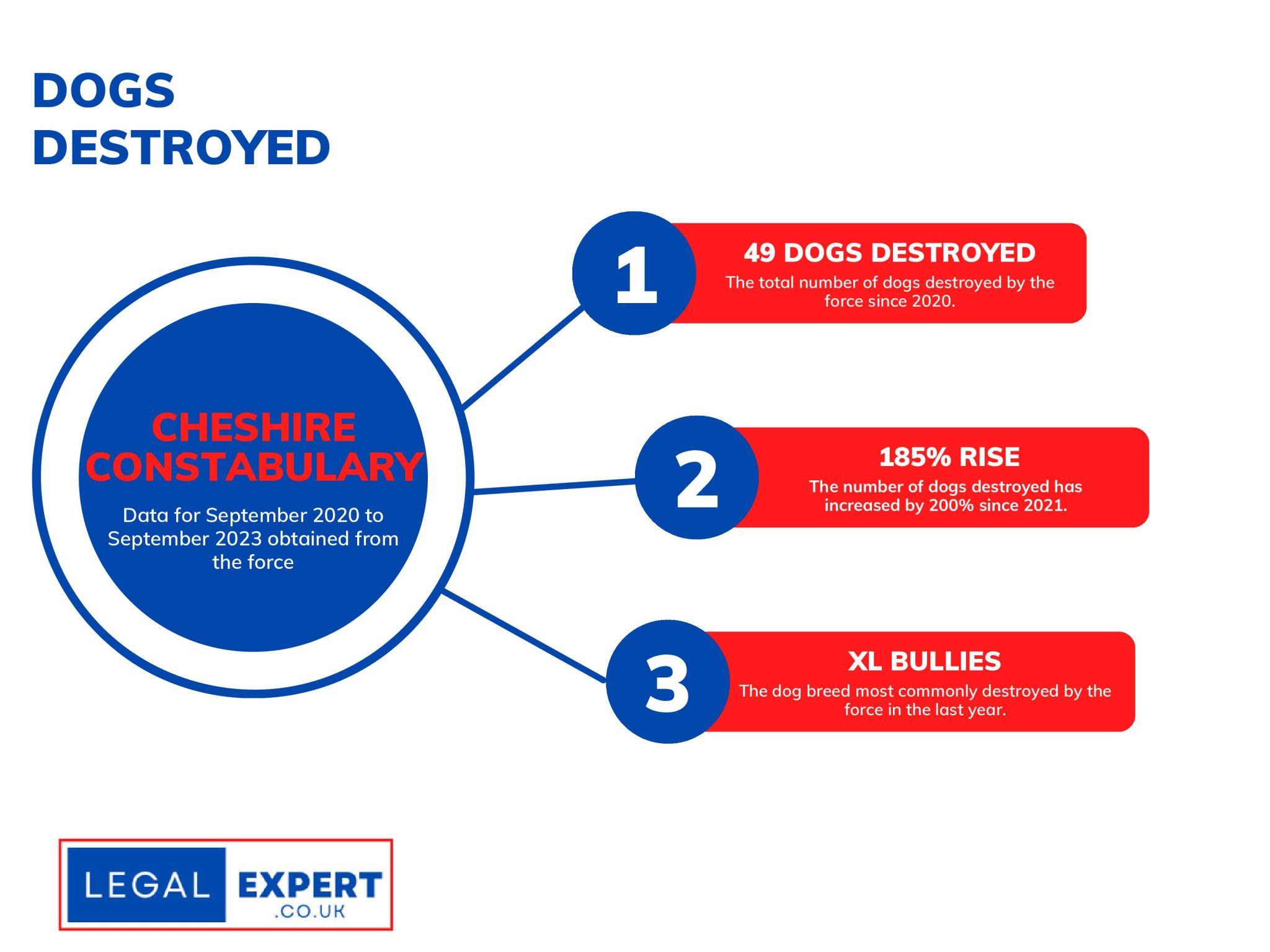Here you can find details of all of our first-hand and primary research on the subject of sexual abuse.
Our Research Into Sexual Offences In The UK
Throughout 2023, we have conducted significant research on the current state of sexual offences in the UK.
Our methodology involves conducting Freedom Of Information Requests, conducting surveys and first-hand interviews.
Below, you can find comprehensive breakdowns of our findings, broken down by each area of the country.
Discover The Latest Sexual Offence Statistics In Your Area

Legal Expert Can Offer Support With Sexual Abuse
If you’d like any advice or support with sexual abuse, assaults or rape—recent or historic—Legal Expert can help.
We appreciate that it can be difficult to revisit these traumatic experiences and our team of specialist solicitors understand this very well. That’s why we always take a sensitive and confidential approach.
Compensation cannot undo your suffering but it can help bring some closure.
Get in touch with us today by calling 0800 073 8804
You can also speak with us in confidence via our live chat, or you can submit a claim enquiry online
Sexual Offences In The UK
Simply click on the drop downs below to find a full breakdown of the statistics that we uncovered for each area.
Avon and Somerset
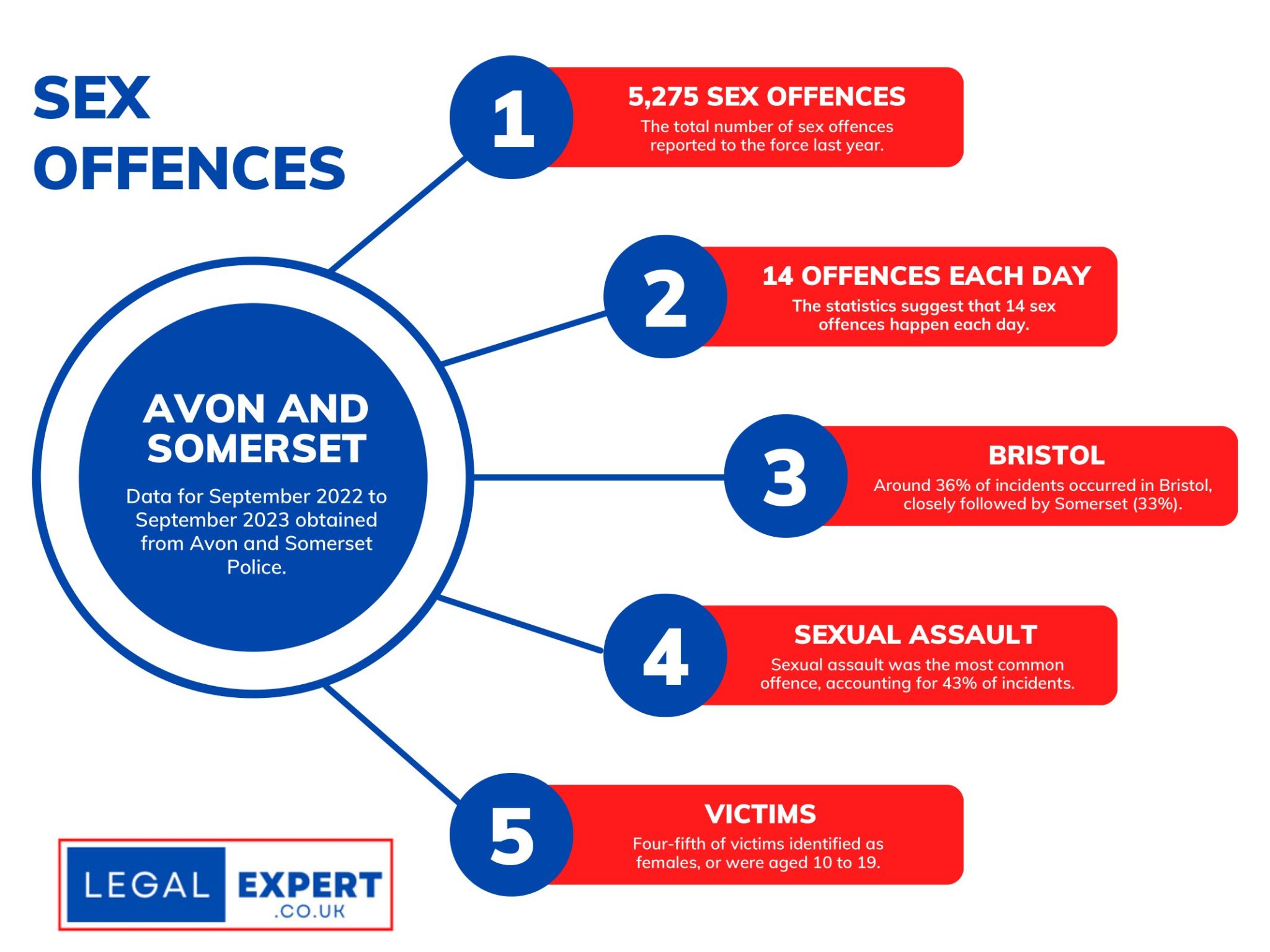
Over 5,000 sex offences were reported to Avon and Somerset Police in the last year.
Bristol was the worst area for sex offences, with the city accounting for 36% of reported incidents between September 2022 to September 2023.
A high number of incidents were also reported in Somerset (33%), South Gloucestershire (13%) and North Somerset (11%).
The least number of incidents were reported in Mendip and West Somerset (6% and 4%, respectively).
The most commonly reported sexual offence incidents included:
- Sexual assaults – 43%
- Rape – 37%
- Exposure and voyeurism – 7%
- Sexual grooming – 5%
Girls and women were more likely to be targeted by sex offenders, making up four-fifths of all victims identified by Avon and Somerset Police.
In contrast, males were more likely to offend, with more than 62% of offenders identifying as male.
Additionally, data indicates that victims and offenders were more likely to be aged between 10 to 19 years-old.
Bedfordshire

The area of Luton has recorded the highest number of sexual offences in Bedfordshire.
Out of 1,749 incidents that happened across Bedfordshire, over 43% of sex offences occurred in Luton.
Bedford recorded the second-highest figure with 29% of incidents, followed by Central Bedfordshire (27%).
More than 10% of incidents occurred in an unidentified or unknown location.
Further data obtained from Bedfordshire Police via a Freedom of Information request revealed that rape incidents made up 37% of sexual offences from September 2022 to September 2023.
Women or girls were more likely to be targeted by sex offenders in Bedfordshire, with 82% of all 1,643 victims identifying as female.
Additionally, the majority of victims were aged under 10 years-old (12%).
In contrast, out of 1,092 offenders, almost 93% were men whilst the biggest age group for offending was those aged 13 (4%) and 15 years-old (3%).
Cambridgeshire
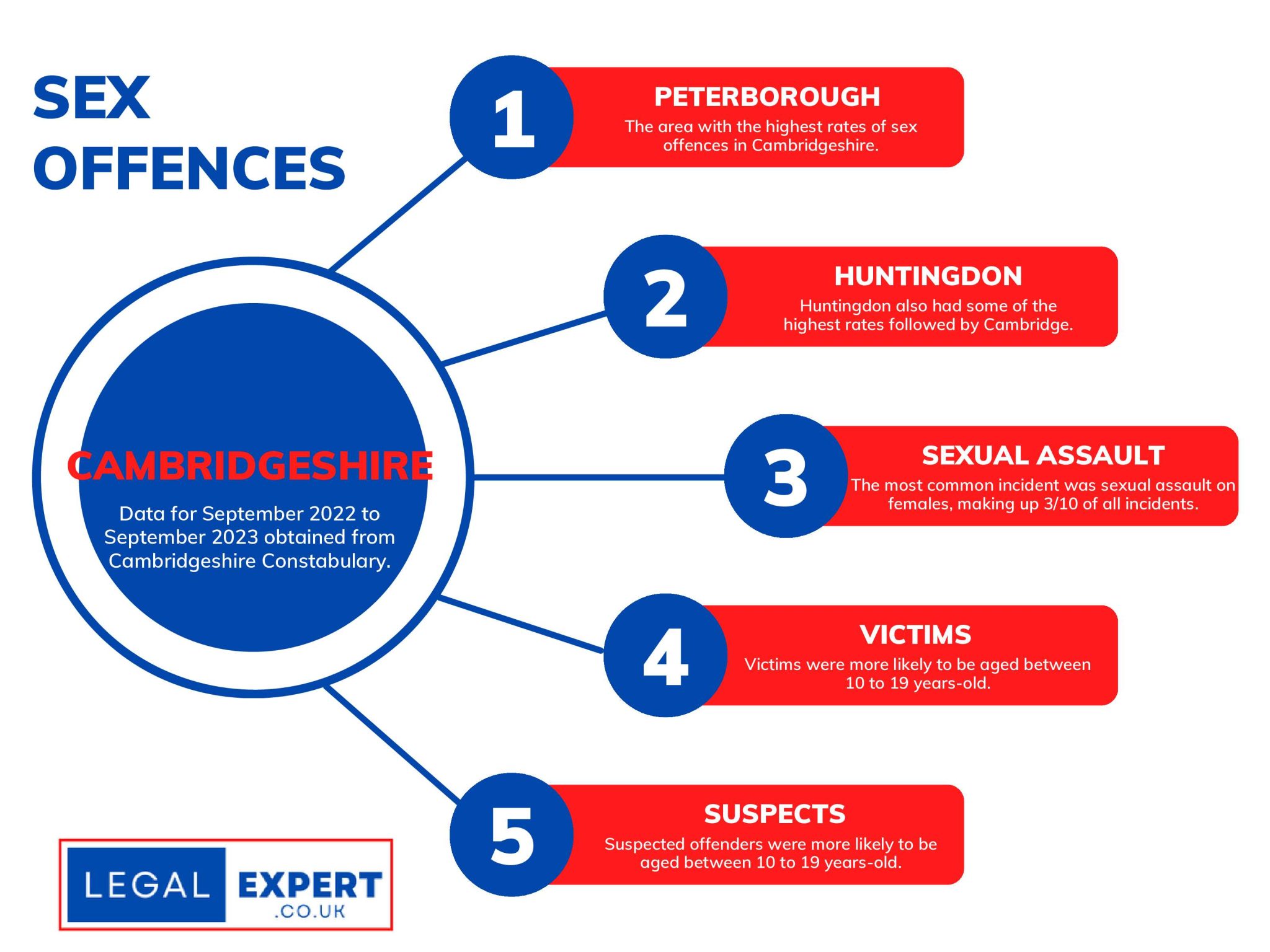
Peterborough is the worst area for sex offences in Cambridgeshire.
The city accounted for 33% of all sex offences reported to Cambridgeshire Constabulary between September 2022 to September 2023.
Cambridge and Fenland followed behind (15% and 13%, respectively).
The areas where the least sex offences occurred were South Cambridgeshire and East Cambridgeshire (9% and 7%, respectively).
Making up 17% of incidents was Huntingdon, indicating the town was the second worst area for sex offences in Cambridgeshire.
Sexual assault on a female was the most common reported incident type, accounting for three-tenths of all incidents in Cambridgeshire.
The most common incident types can be found below:
- Sexual assault on a female – 30%
- Rape of a female aged 16 or over – 29.5%
- Sexual assault of a female child under 13 – 8%
- Rape of a female aged under 16 – 7%
- Sexual assault on a male – 6%
Most likely to be targeted by sex offenders were 10 to 19 year-olds, whilst the same age group were also more likely to be suspected of a sex offence.
Cleveland
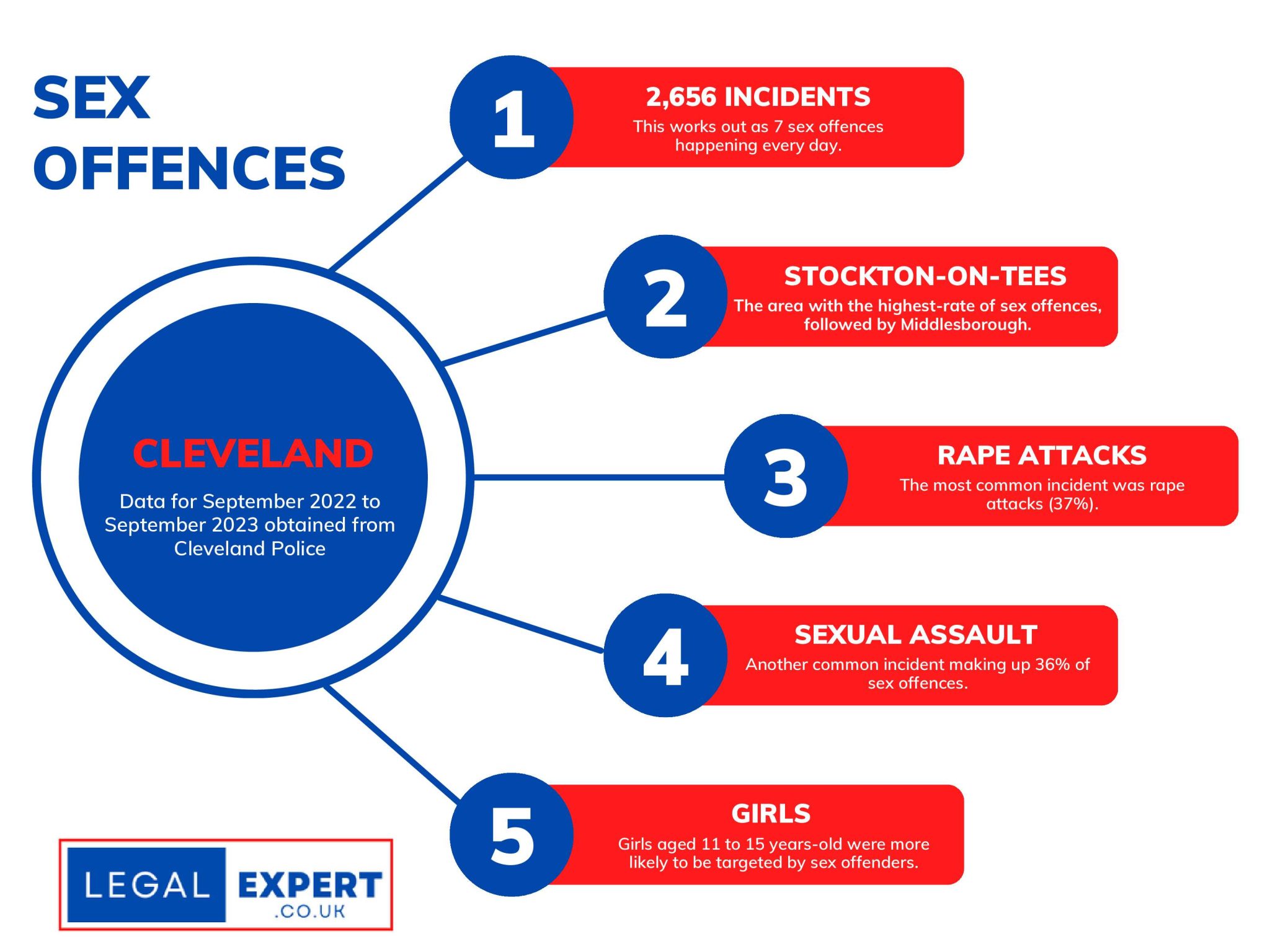
Most sex offence incidents reported to Cleveland Police in the last year occurred in Stockton-on-Tees (32%).
The figures obtained through a Freedom of Information request also found that the most rape attacks were reported in Middlesbrough (33%).
In contrast, the least sex offence incidents, including rape attacks, were reported in Hartlepool (13%) from September 2022 to September 2023.
Out of 2,656 sex offences that Cleveland Police dealt with, the majority related to rape attacks (37%), followed by sexual assault (36%) and sexual activity involving a child aged 16 or under (15%).
Other common incident types included sexual grooming, exposure and voyeurism (all 5%).
Girls aged 11 to 15 years-old were more likely to be targeted by sex offenders, followed by women aged 26 to 35.
Figures indicated that the main perpetrators for sex offences were teenage boys and men aged 16 to 25, followed by men aged between 26 to 35 years-old.
Cheshire
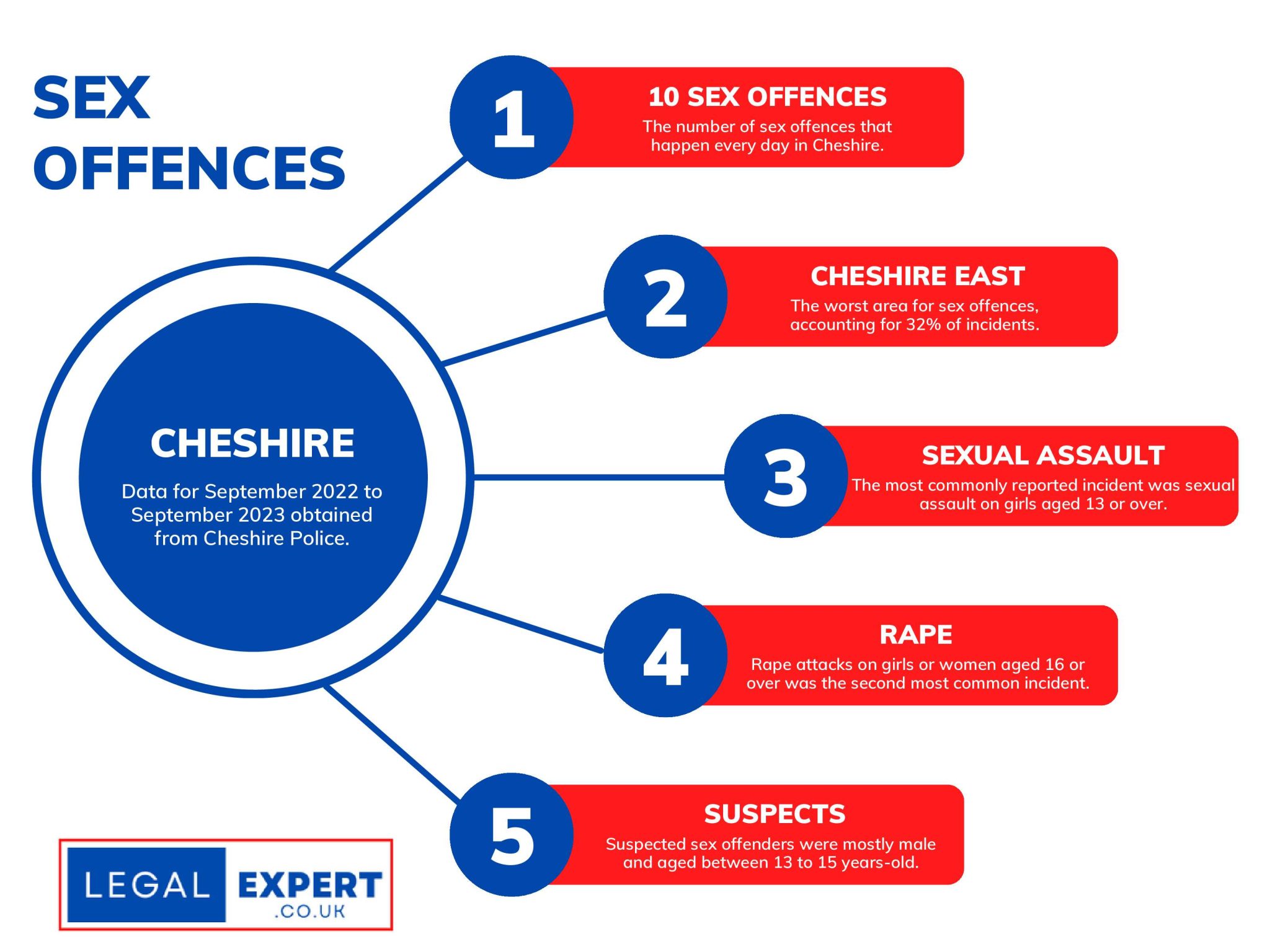
New data has found that 10 sex offences happen every day in Cheshire.
In addition, Cheshire East was found to be the area with the highest rates of sex offences, where more than 32% of incidents occurred.
Following behind were Cheshire West (30%), Warrington (21%) and Halton (15%).
Almost a quarter of sex offences recorded by Cheshire Constabulary were sexual assaults on girls aged 13 or over.
Other common types of sex offences included rape of a girl or woman aged 16 and over (23%), sexual activity involving a child under 16 (9%) and sexual assault on girls under 13 (7%).
Males were found more likely to commit a sex offence, whilst those aged between 13 to 15 years-old were the age group with the highest rate of offending.
Cumbria
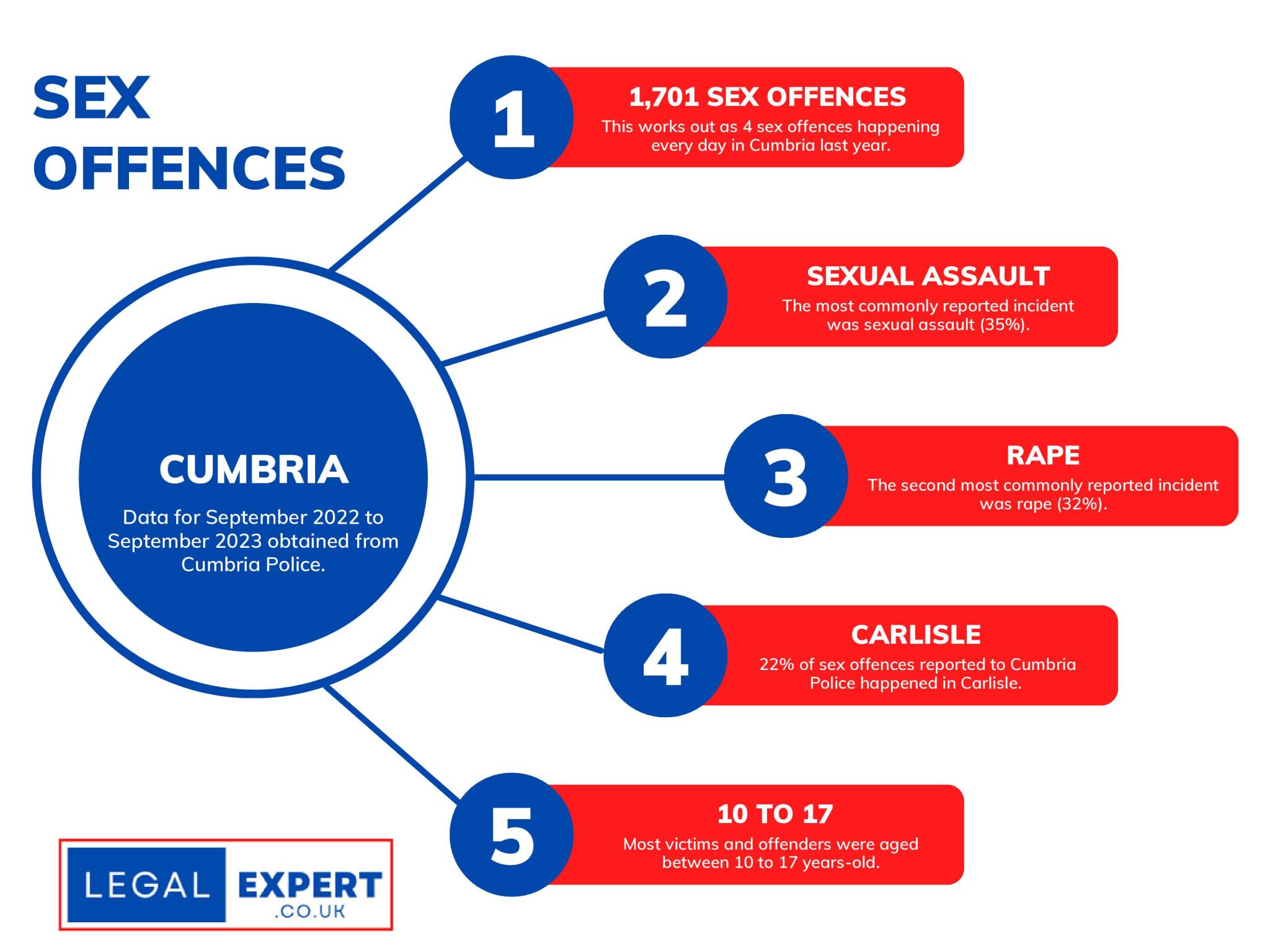
Carlisle is the worst area in Cumbria for sex offences.
The area accounted for 22% of 1,701 incidents reported to Cumbria Police between September 2022 to September 2023.
Barrow was the second worst area making up 15% of incidents in Cumbria.
Other areas found to have high rates of sex offences included South Lakeland (12%), Workington and Allerdale (both 8%), Whitehaven and Copeland (both 7%) and Eden (6%).
Sex offences were least reported in Cleator Moor, where less than 1% of incidents occurred, followed by Maryport (3%) and Penrith (5%).
Sexual assault was the most common incident type identified across Cumbria, accounting for 35% of all sex offence incidents in the last year.
The most common sex offences are as follows:
- Sexual assault – 35%
- Rape – 537
- Sexual activity – 24%
- Exposure and voyeurism – 5%
- Sexual grooming – 2%
Young people aged between 10 to 17 years-old were found to be more likely to be both the victim and the perpetrator of sex offences.
Dorset
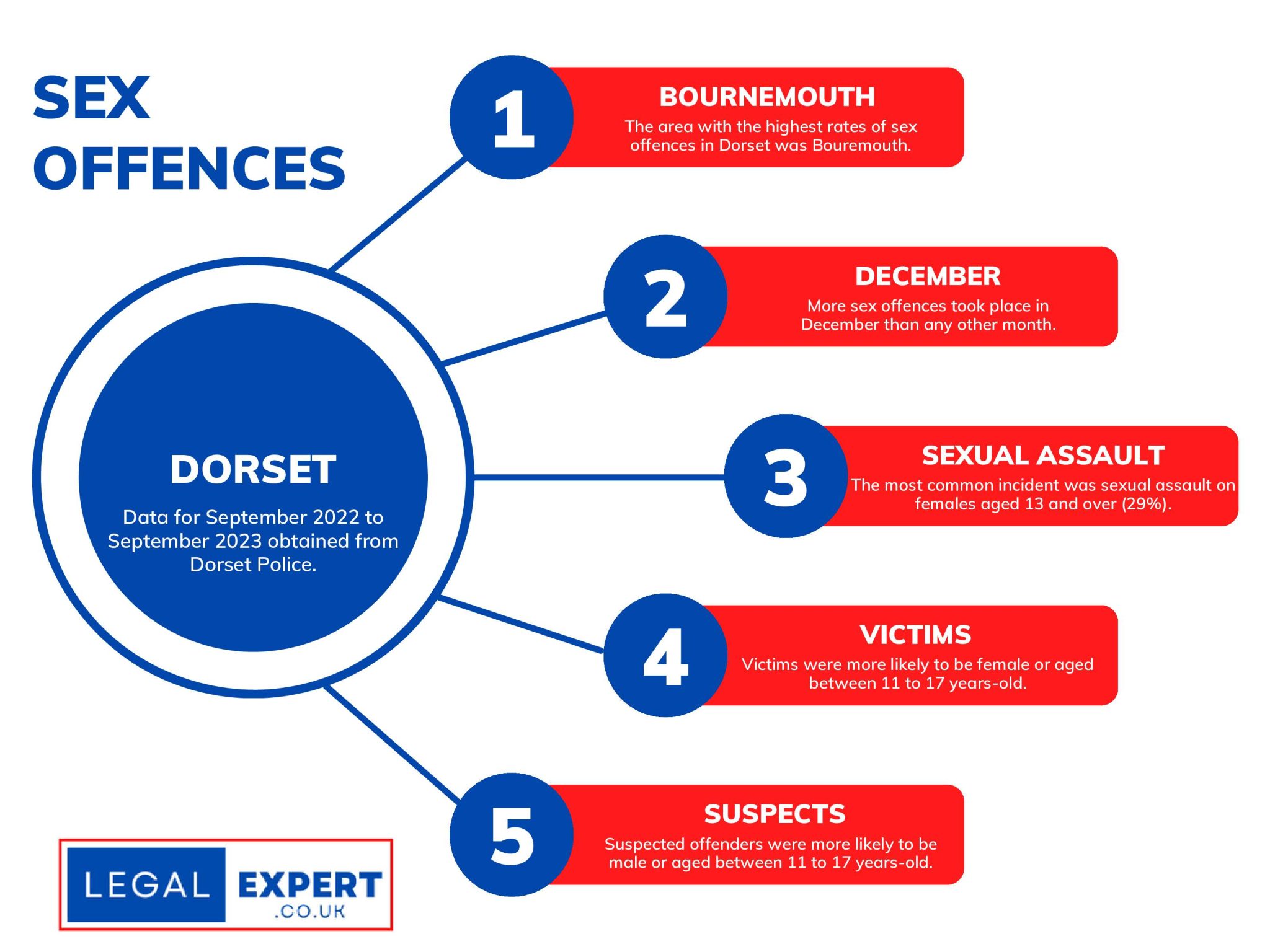
More sex offences have been recorded in Bournemouth than any other area in Dorset in the last year.
Around 38% of sex offence incidents reported to Dorset Police between September 2022 to September 2023 occurred in Bournemouth.
Other areas in Dorset that had high rates of sex offence incidents included Poole (17%), Weymouth (10%) and West Dorset (10%).
The areas where the least sex offences were reported were East Dorset (7%), North Dorset (7%), Purbeck (6%) and Christ Church (4%).
Figures obtained from Dorset Police also indicated that October was the month when sex offences were likely to take place, whilst December was the least likely month.
Sexual assault on girls or women aged 13 and over was the most commonly reported incident type, accounting for 29% of incidents.
The second most common incident was rape of a female aged 16 and over (26%).
Other common incidents reported included sexual activity involving a child under 16 years-old and sexual assault on a female child under 13 years-old (both 6%).
Girls or women were more likely to be targeted by sex offenders, whereas males were more likely to be suspected perpetrators.
The age group most likely to be either the victim or offender was 11 to 17 year-olds.
Dyfed-Powys
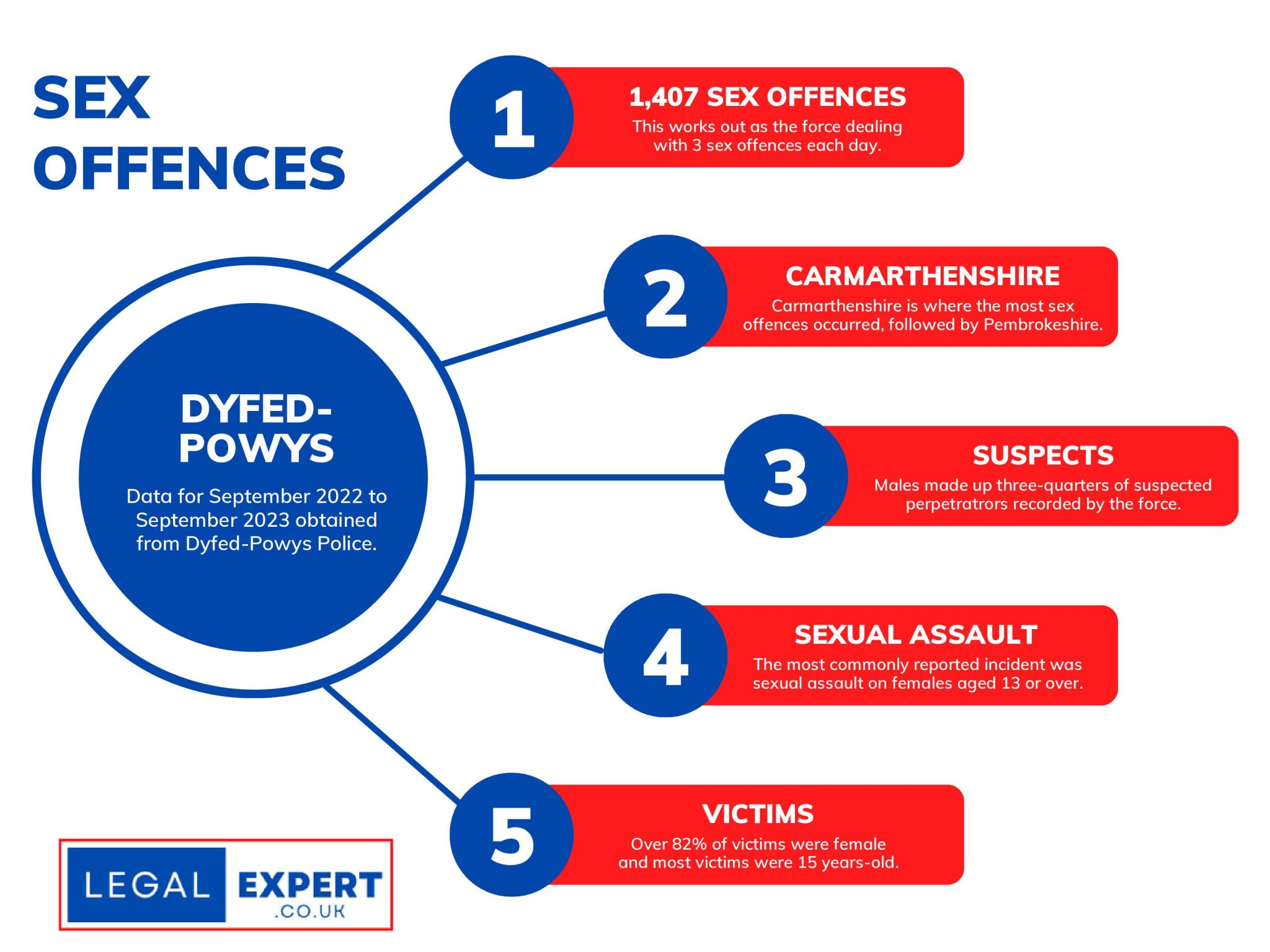
Dyfed-Powys Police dealt with more sex offences in Carmarthenshire than any other county it polices last year.
Following behind was Pembrokeshire where almost a quarter of incidents that were reported to Dyfed-Powys Police between September 2022 to September 2023 occurred.
Powys and Ceredigion accounted for 24% and 16% of incidents, respectively.
The most commonly reported incident involved sexual assault on a female aged 13 or over, followed by rape of a female aged 16 or over.
Women or girls were more likely to be targeted by sex offenders, accounting for over 82% of victims recorded by Dyfed-Powys Police.
In contrast, more than three-quarters of suspects identified as male.
Furthermore, figures indicated that 15 year-olds were more likely to be either a victim or perpetrator of sex offences.
Durham
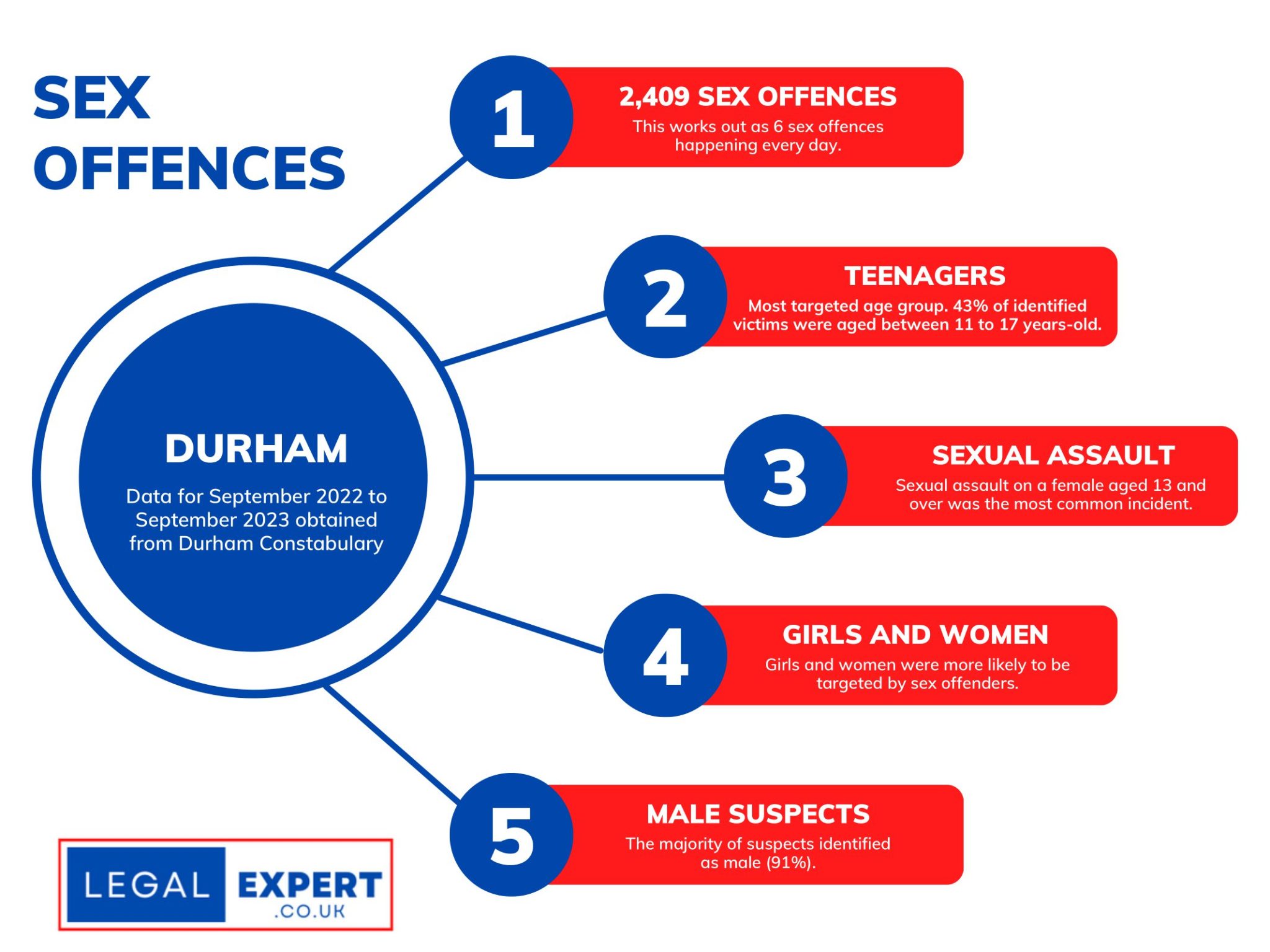
Teenagers are the most likely to be the victim and perpetrator of sexual offences in Durham.
A Freedom of Information request to Durham Constabulary found that out of 2,334 victims, around 43% were aged between 11 to 17 years old.
Despite only 236 offenders being identified, 19% were recorded in the same age group.
Most victims were female (75%) whilst the majority of offenders were male (91%).
A total of 2,409 incidents were reported to Durham Constabulary from September 2022 to September 2023.
Sexual assault on a female aged 13 and over was the most commonly reported sexual offence (21%), followed by rape of a female aged 16 and over (19%).
Other common incidents included sexual activity involving a child under 16 years old (13%), sexual activity involving a child under 13 years old (7%) and sexual assault on a female aged under 13 years old (7%).
Essex
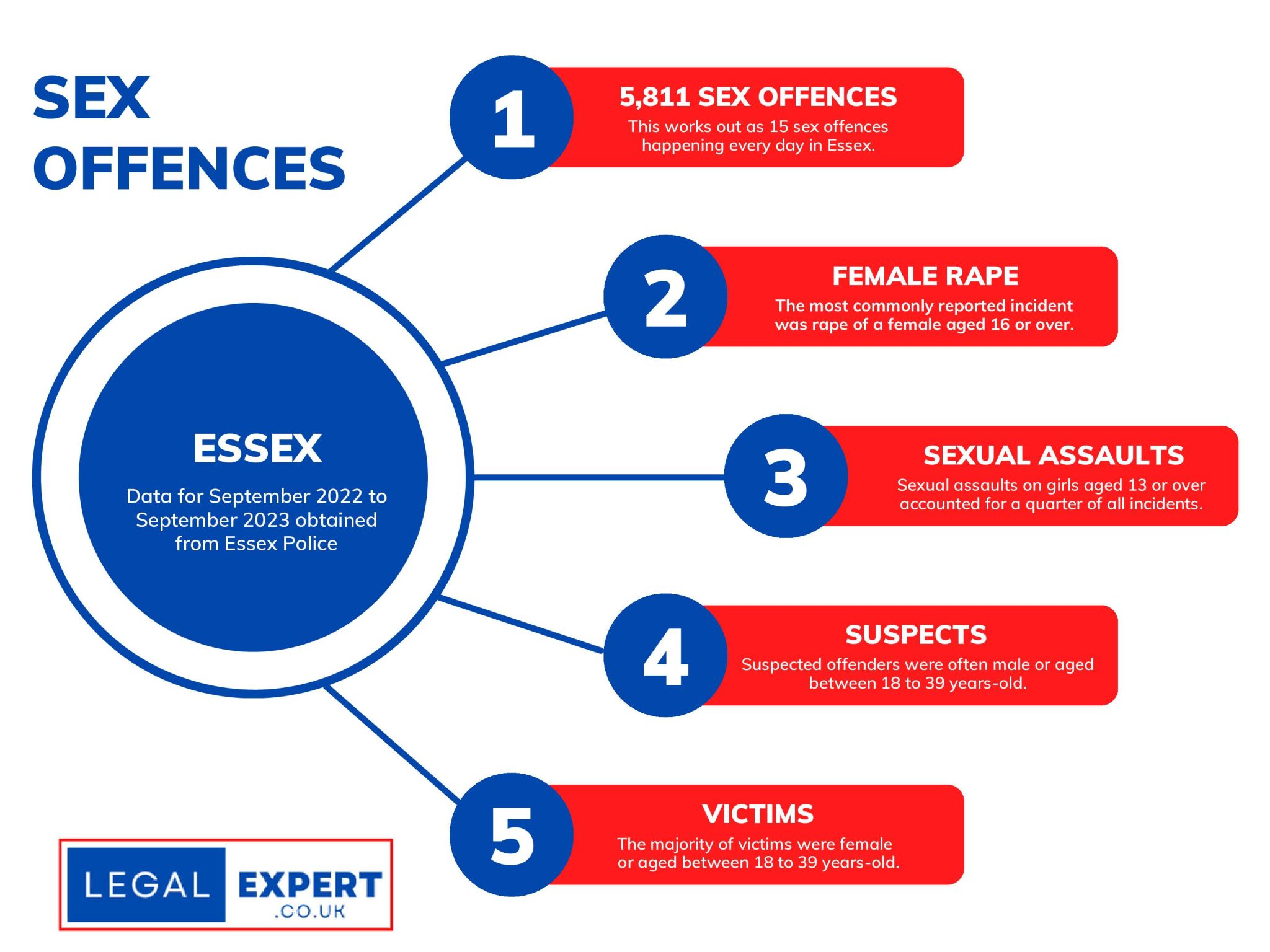
A total of 5,811 sex offences were reported to Essex Police in the last year.
The most common incident type was found to be rape of a girl or woman aged 16 or over, which made up 30% of all incidents from September 2022 to September 2023.
Sexual assaults on girls aged 13 or over accounted for a quarter of all incidents in the same period.
Over 46% of victims were children or teenagers, whilst 38% of victims were aged between 18 to 39 years-old.
More than 85% of victims were girls or women indicating females were the most likely to be targeted by sex offenders.
In contrast, males were more likely to be the perpetrators of sex offences, with 92% of suspects identifying as male.
The majority of suspects were aged between 18 to 39 years-old.
Greater Manchester
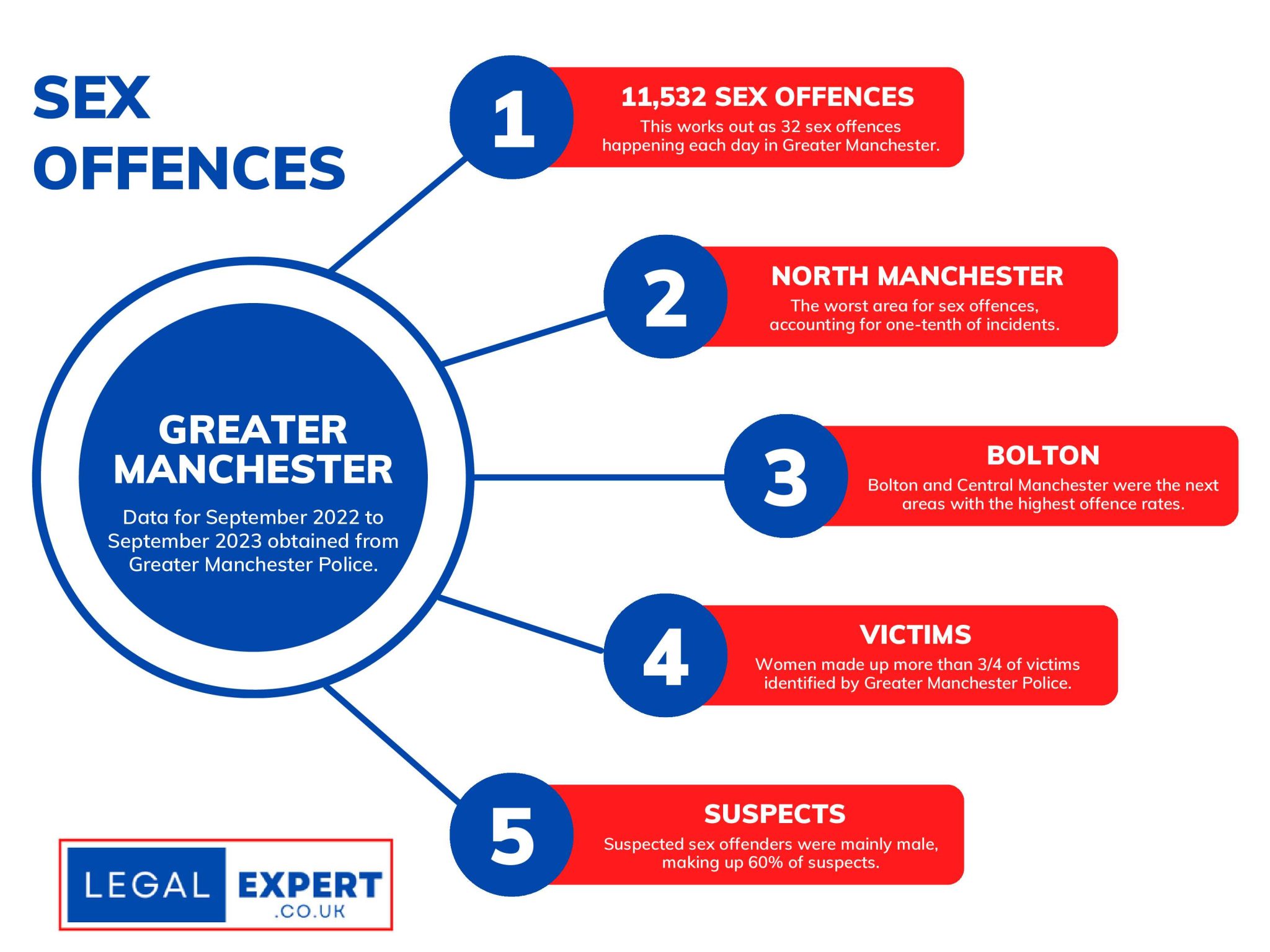
Around 32 sex offences happen each day in Greater Manchester.
Over one-tenth of incidents reported to Greater Manchester Police between September 2022 to September 2023 occurred in North Manchester.
Other areas with high rates of sex offences included Central Manchester and Bolton (both 10%), followed by Wigan (9.7%), Salford (9%) and Oldham (8.9%).
Women made up more than three-quarters of victims identified by Greater Manchester Police, indicating women were more likely to be targeted by sex offenders.
In contrast, men accounted for 60% of offenders recorded by Greater Manchester Police, suggesting men were more likely to commit a sex offence.
Hertfordshire

Sexual offences were more prevalent in Dacorum than anywhere else in Hertfordshire in the last year.
Over 12% of incidents reported to Hertfordshire Constabulary between September 2022 to September 2023 occurred in Dacorum.
Welwyn Hatfield, Stevenage and St Albans were areas with some of the highest rates of sex offences too, with each area accounting for 11% of incidents.
Sexual assaults made up two-fifths of reported incidents, whilst rape attacks were the second most commonly reported incidents.
Children aged 11 to 13 years-old were found to be the most likely to be targeted by sex offenders, followed by children aged 6 to 10 years-old.
In contrast, suspected sex offenders tended to be aged 14 to 15 years-old.
Kent
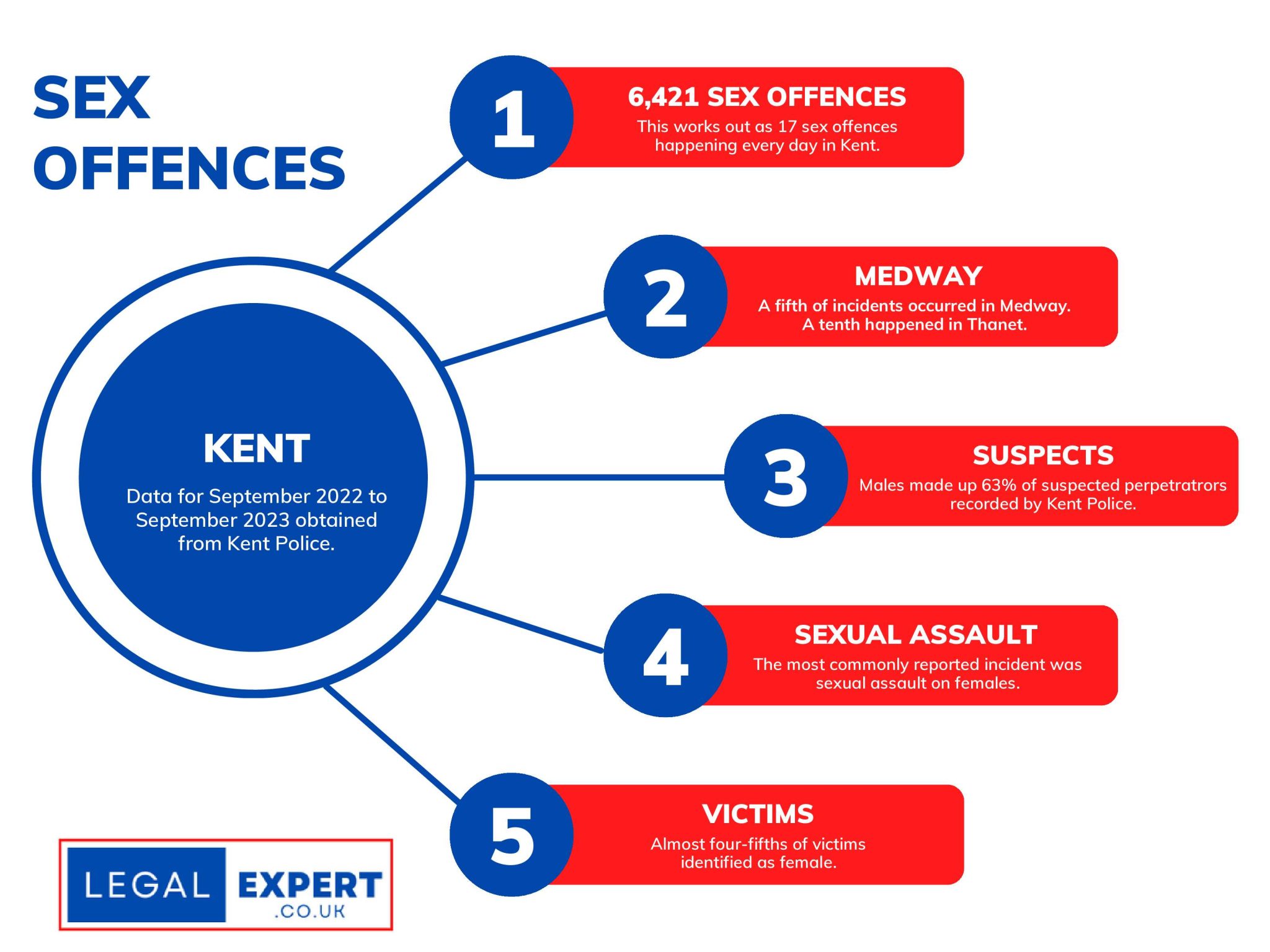
Around 17 sex offences happen each day in Kent.
Almost a fifth of incidents reported to Kent Police from September 2022 to August 2023 occurred in Medway, making it the area with the highest rate of sex offences.
A tenth of incidents reported to Kent Police happened in Thanet.
Canterbury and Maidstone accounted for 9% of where incidents took place, closely followed by Swale (8%).
The most commonly reported sex offence was sexual assault on a female, which made up almost a quarter of incidents.
Rape of a female aged 16 or over was also commonly reported (23%).
Other common incident types included sexual assault of a female child under 13 (6%), sexual assault on a male and exposure (both 5%).
Girls and women were more likely to be targeted, with almost four-fifths of victims identifying as female.
In contrast, males made up 63% of suspected perpetrators recorded by Kent Police.
Leicestershire
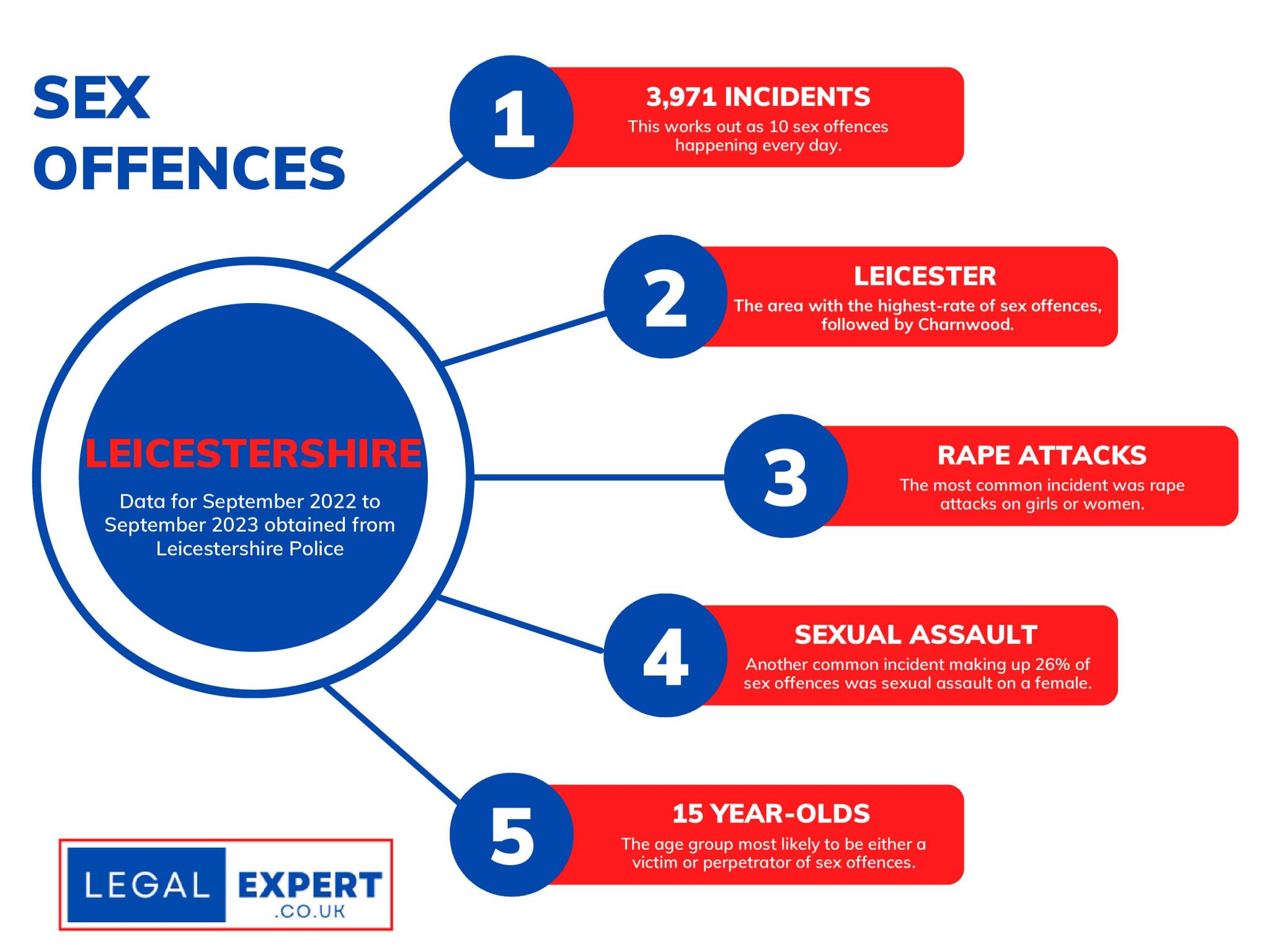
Two fifths of sexual offences in Leicestershire happened in Leicester in the last year.
Out of 3,971 sexual offence incidents recorded across the county between September 2022 to September 2023, over 40% occurred in Leicester.
Areas that also ranked high for sexual offences included Charnwood (14%), North West Leicestershire (9%), Blaby (8%) and Hinckley and Bosworth (7%).
Rutland was the area where the least sexual offences took place (2%), followed by Melton (4%), Oadby and Wigston (4%), and Harborough (5%).
Female rape made up three-tenths of incidents, making it the most common type sexual offence in Leicestershire in the last year.
Sexual assault on a female was the second most common incident, accounting for 26% of incidents recorded by Leicestershire Police.
Other common incident types included offenders inciting a child to engage in sexual activity (5%), sexual assault on a male (5%) and indecent exposure (4%).
Women and girls were more likely to be the target of sexual offences, accounting for 80% of 3,966 victims.
In contrast, men and boys were more likely to be sex offenders, with 90% of 2,902 perpetrators identifying as male.
The age group most affected by sexual offences were 15 year olds, with figures indicating they were more likely to be both the victim and perpetrator.
Lancashire
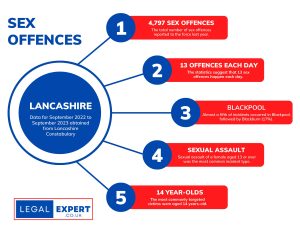
Around 13 sex offences happened each day in Lancashire in the last year.
A total of 4,797 sex offences were recorded by Lancashire Constabulary between September 2022 to September 2023.
Blackpool was the area where sex offences were most likely to happen in Lancashire, with almost a fifth of incidents occurring in the district.
Other areas that had high rates of sex offences included Blackburn (17%), Preston (16%) and Burnley (10%),
Further data obtained from Lancashire Constabulary revealed the most common type of sex offence reported was sexual assault of a female aged 13 or over, which made up 23% of incidents.
Other common incident types included rape of a female aged 16 or over (18%) and sexual activity with a child under 16 years-old (12%).
Females were more likely to be targeted by suspected sex offenders, whilst males were more likely to be suspected of committing an offence.
In addition, 14 year-olds were more likely to be targeted by sex offenders, whilst 13 year-olds were more likely to be suspected of offending.
Lincolnshire
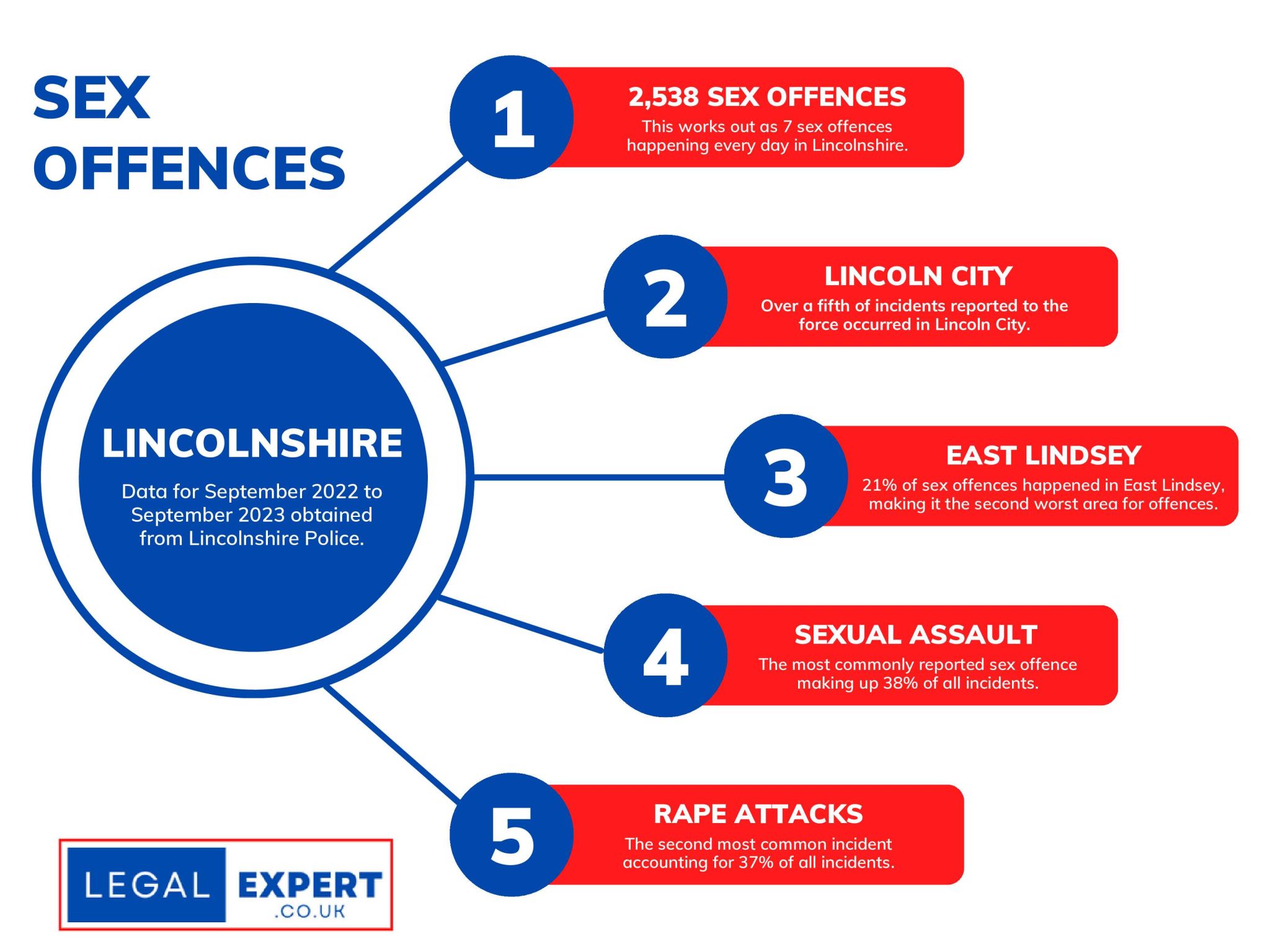
Around 7 sex offences happen each day in Lincolnshire.
Furthermore, over a fifth of incidents occurred in Lincoln City, making it the area with the highest rate of sex offences in Lincolnshire.
Data obtained from Lincolnshire Police found that 2,538 incidents were reported altogether from September 2022 to September 2023.
A full breakdown of incidents by area can be found below:
- Lincoln City – 22%
- East Lindsey – 21%
- South Kesteven – 13%
- South Holland – 12%
- West Lindsey – 11%
- North Kesteven – 10%
- Boston – 10%
Sexual assaults were the most reported incident to Lincolnshire Police, accounting for 38% of all incidents, closely followed by rape attacks (37%).
London
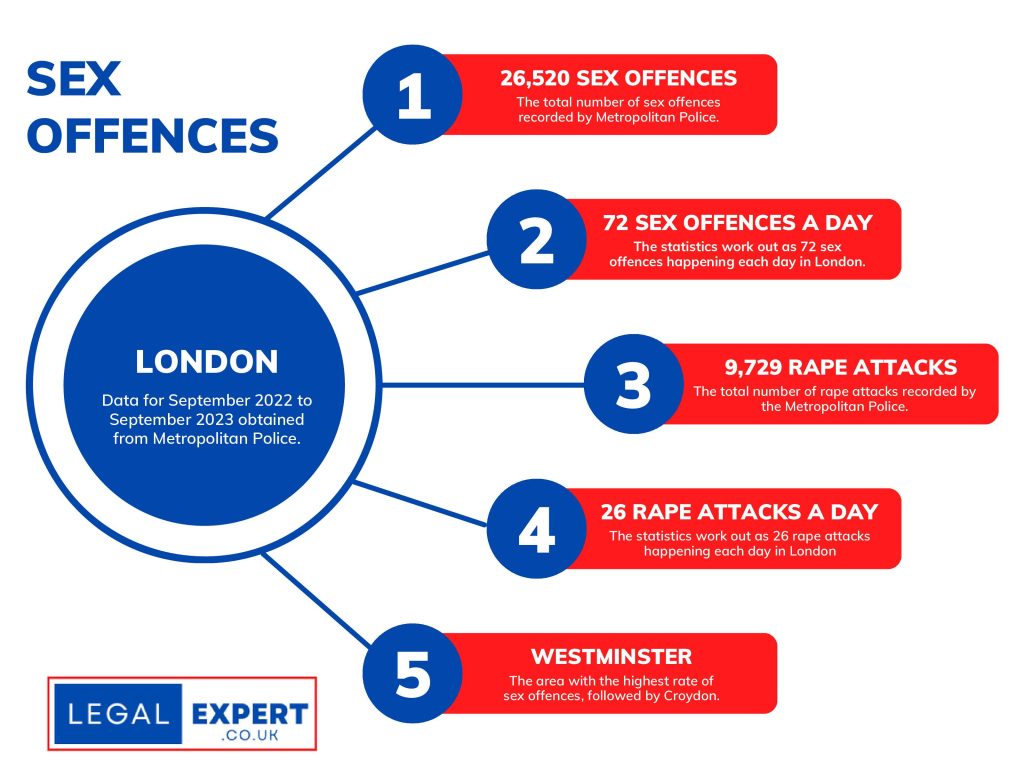
Around 72 sex offences happen each day in London, new data from LegalExpert.co.uk has found.
Data obtained from the Metropolitan Police revealed a total of 26,520 sex offences occurred in London between September 2022 to September 2023.
Westminster was the area with the highest number of sex offences, accounting for 6.4% of incidents.
Following behind was Croydon (5%), Newham (4.7%), Lambeth (4.6%) and Tower Hamlets (4.3%).
Additionally, a total of 9,729 rape attacks were reported across London, which works out as 26 rape attacks taking place each day.
More rape attacks occurred in Croydon than anywhere else in London.

Merseyside
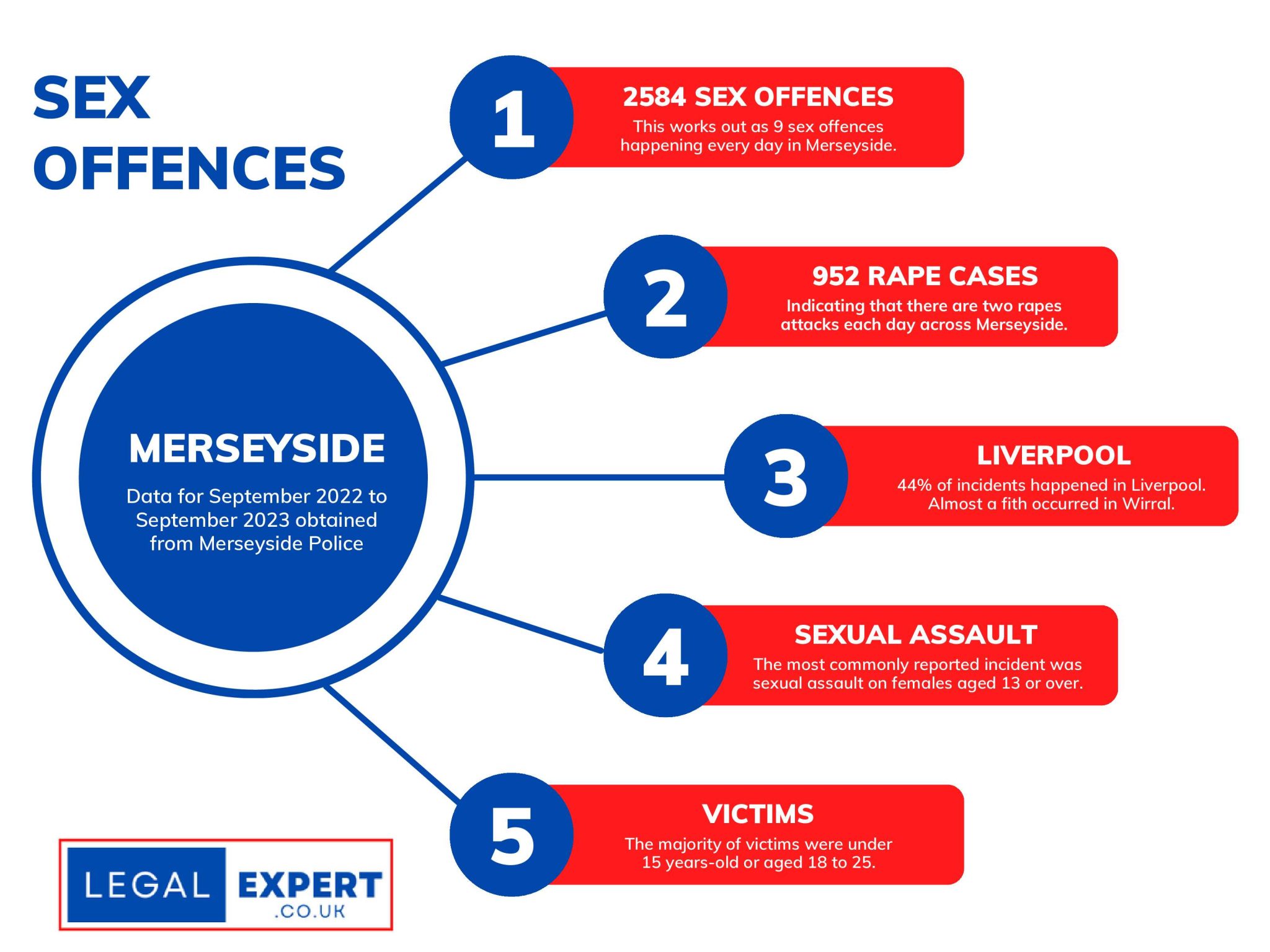
Around 9 sex offence incidents happen each day in Merseyside, new data from LegalExpert.co.uk has found.
Additionally, 44% of incidents reported to Merseyside Police from September 2022 to September 2023 occurred in Liverpool.
Almost a fifth of sex offences happened in Wirral, whilst Sefton and St. Helens accounted for 15% and 12% of incidents, respectively.
More than 9% of sex offences incidents happened in Knowsley.
The most commonly reported sex offence was sexual assault on girls or women aged 13 or over, which made up over a quarter of incidents.
Victims identified by Merseyside Police were mostly under 15 or aged between 18 to 25 years-old, whilst girls and women were more likely to be targeted by sex offenders.
Men were found more likely to commit a sex offence, whilst suspected offenders tended to be aged between 26 to 35 years-old.
A spokesperson from the Criminal Injury Team at Liverpool firm JF Law, which owns the LegalExpert.co.uk brand, said:
“The Domestic Abuse Act 2021 and recent high-profile cases have brought sexual and physical abuse to the forefront of public policy.
“Many people are not aware that there does not need to be a conviction to claim.
“This means that even for those victims let down by the criminal justice system, there is still an opportunity to obtain a financial remedy which may help victims achieve a sense of closure.”
A copy of this FOI response can be provided upon request.
Nottinghamshire
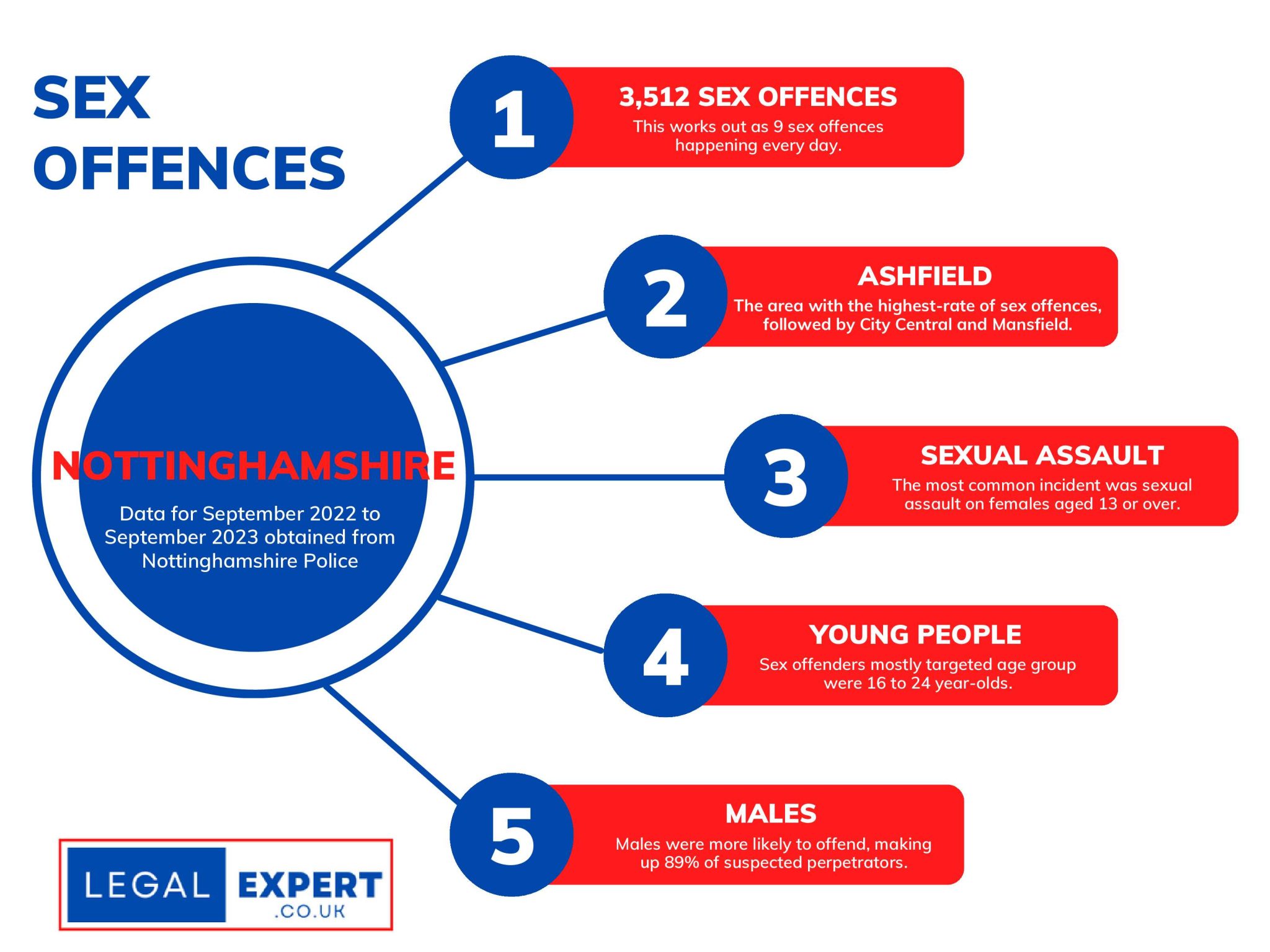
Ashfield is the worst area for sexual offences in Nottinghamshire.
A Freedom of Information request to Nottinghamshire Police found that 3,512 sexual offence incidents occurred in the county between September 2022 to September 2023.
Around 11% of incidents happened in Ashfield, followed by City Central (10%) and Mansfield (9.8%).
The least sexual offences occurred in Rushcliffe (5%) and the City Centre (6%).
Further data found that young people aged between 16 to 24 were more likely to be the victim of sexual offences than any other age group.
Additionally, 79% of victims identified as female, whereas 15% identified as male. Over 6% of victims did not determine their gender.
The figures suggest that out of the 2,771 suspects or offenders, 89% identified as male.
The most common incident type was sexual assault involving girls or women over 13, which accounted for 26% of all sexual offence incidents.
Female rape where the victim was aged over 16 followed behind (25%), whilst other common incidents included exposure or voyeurism (7%) and sexual assault of girls aged 13 or under (6%).
Norfolk
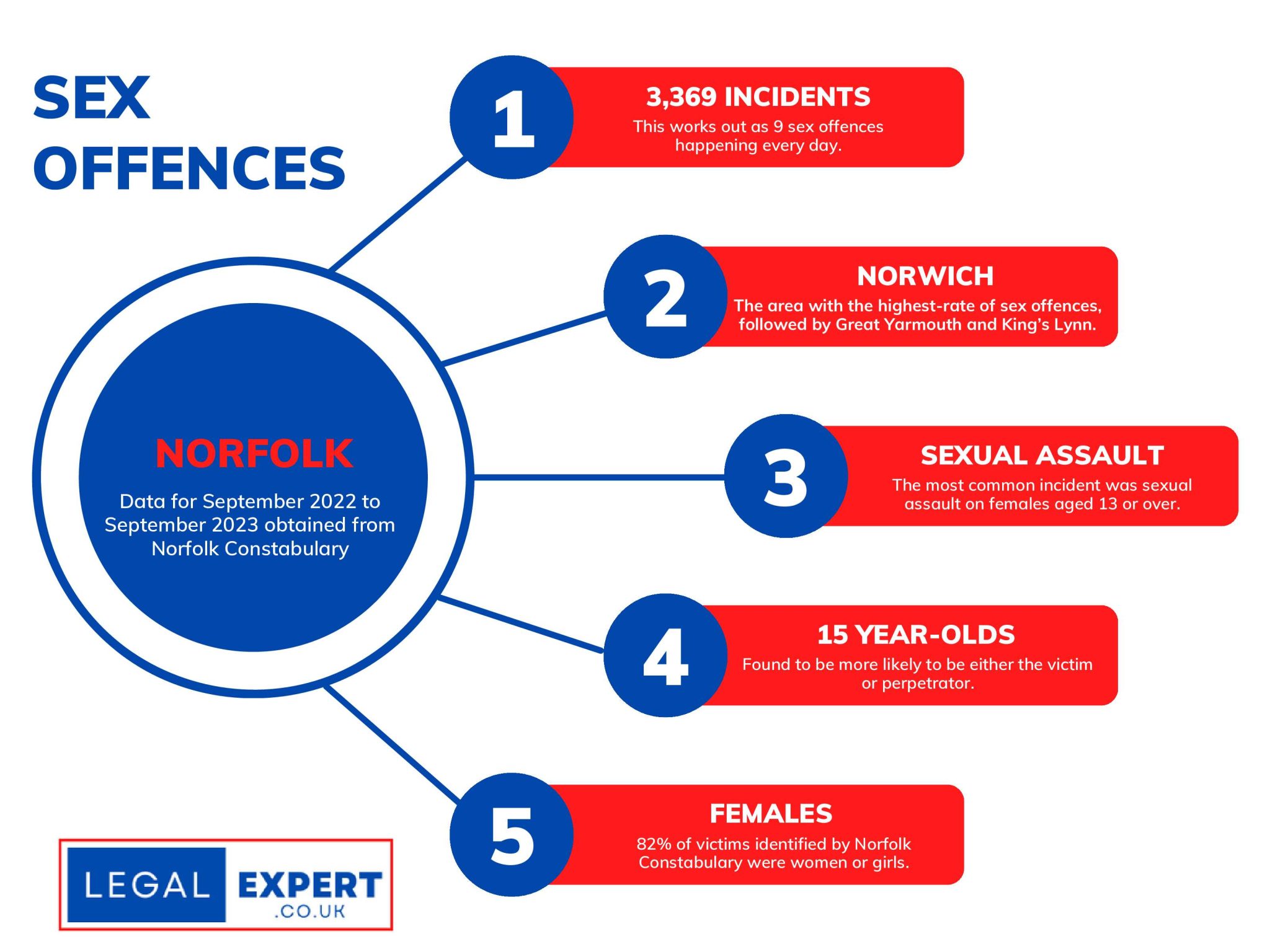
The majority of sex offence incidents in Norfolk occurred in Norwich last year.
Norwich accounted for almost 26% of incidents reported to Norfolk Constabulary from September 2022 to September 2023.
Great Yarmouth was the second worst area in Norfolk for sex offences (16%), followed by King’s Lynn and West Norfolk (14%) and Breckland (13%).
The least percentage of sex offence crimes were reported in Broadland (9%).
Data obtained via a Freedom of Information request revealed that the most common incident type was sexual assault on a girl aged 13 or over (28%).
Other common crimes included female rape where the victim was aged 16 and over (23%), sexual activity involving a child under 16 (10%) and sexual assault on girls aged 13 or under (6%).
Furthermore, out of 3,188 victims, over 82% were girls or women.
In contrast, boys or men accounted for 89% of the 2,620 suspects identified by Norfolk Constabulary.
Children aged 15 years-old were also found to be more likely to be either the victim or perpetrator of sex offences.
North Yorkshire
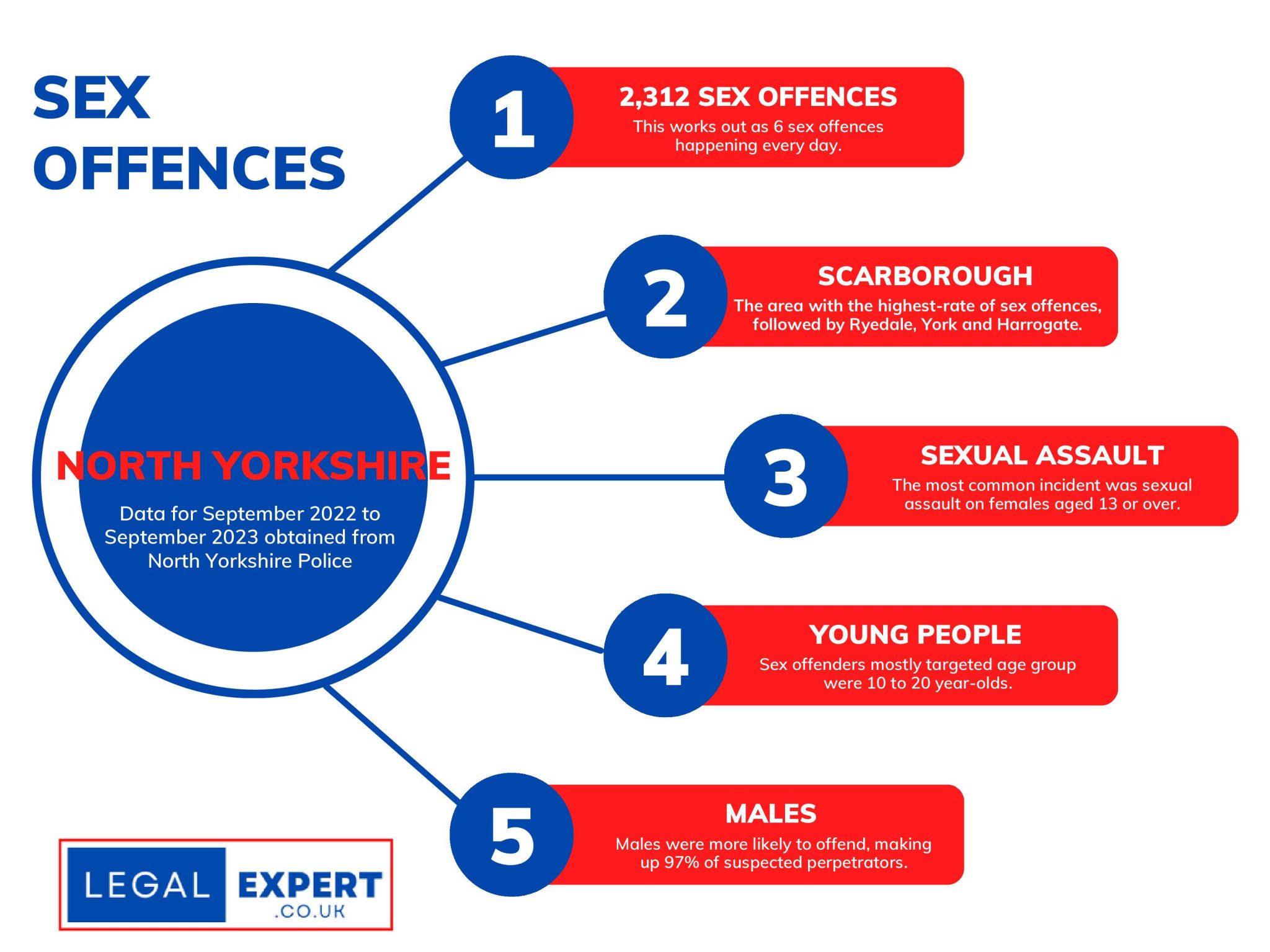
Scarborough and Ryedale are the worst areas for sexual offences in the North Yorkshire district.
Out of 2,312 incidents that occurred between September 2022 to September 2023, over 28% happened in Scarborough and Ryedale.
York was also one of the worst areas for sexual offences (24%), followed by Harrogate (17%) and Hamleton and Richmondshire (15%).
The areas where the least incidents occurred included Selby (10%) and Craven (5%).
Sexual assault on females aged 13 or over was the most common incident recorded in North Yorkshire, followed by rape of a girl or woman aged 16 or over.
Other common incidents involved sexual activity where the child was aged under 16 or 13 years old.
Figures also indicated that women or girls were more likely to be the victims of a sexual offence, accounting for 75% of all 2,398 victims.
Victims aged between 10 to 20 years old were the most commonly targeted age group.
Only 154 suspects were identified by North Yorkshire Police, 97% of which were male.
North Wales
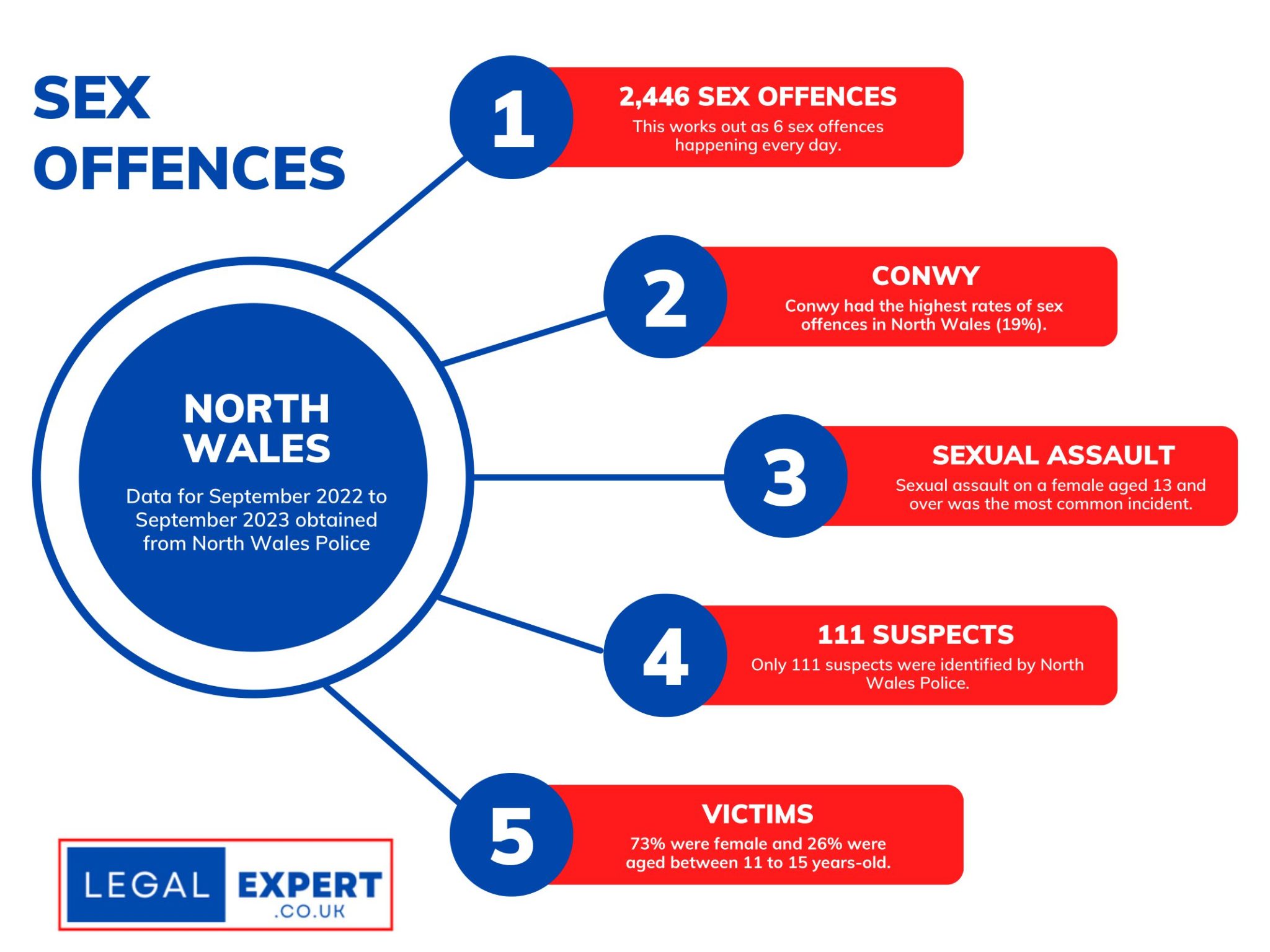
More sexual offences occurred in Conwy than anywhere else in North Wales in the last year.
Out of 2,446 incidents that occurred between September 2022 to September 2023, over 19% occurred in Conwy, closely followed by Wrexham, Flintshire and Denbighshire.
Gwynedd and Anglesey had the least incidents, whilst North Wales Police recorded 12 sexual offences within the Force.
The most repeated sexual offence in North Wales was found to be sexual assault on a female aged 13 and over, making up 25% of incidents.
Other crimes that rated high in terms of count included rape of a female aged 16 and over (17%), sexual activity involving a child under 16 (10%) and sexual activity involving a child under 13 (8%).
Alarmingly, only 111 perpetrators were identified by North Wales Police.
Whilst men were found more likely to commit sexual offences, those aged between 26 to 45 were the age group responsible for the most incidents.
Over 73% of victims were female, and victims aged 11 to 15 were the most targeted age group, accounting for 26% of incidents.
Staffordshire

Stoke-on-Trent is the most dangerous place in Staffordshire for sexual offences.
The number of sexual offence incidents that occurred in Stoke-on-Trent were nearly triple that of Newcastle-under-Lyme, which was found to be the second most dangerous place.
Stafford followed behind, accounting for 11% of the 3,567 incidents that took place in Staffordshire between September 2022 to September 2023.
Elsewhere, one-tenth of sexual offence incidents occurred in East Staffordshire.
Lichfield, Staffordshire Moorlands and Cannock Chase each made up 7% of incidents.
The least dangerous places for sexual offences were found to be Tamworth and South Staffordshire, where 6% and 5% of incidents happened, respectively.
Further data obtained from Staffordshire Police via a Freedom of Information request found that rape of a female aged 16 or over was the most common sexual offence.
Other common types of incidents included sexual assault on a female aged 13 and over, exposure, sexual assault of a female child under 13 and rape of a female under 16.
Children and teenagers were found most likely to be sexually assaulted, with around 49% of all 3,426 victims being aged 18 years or younger.
Additionally, the figures suggested women and girls were more likely to be targeted by sex offenders. Almost 83% of victims identified as female.
In contrast, from the 2,238 suspects recorded by Staffordshire Police, the majority were aged between 18 to 30 years old (17%) and were male (59%).
South Wales
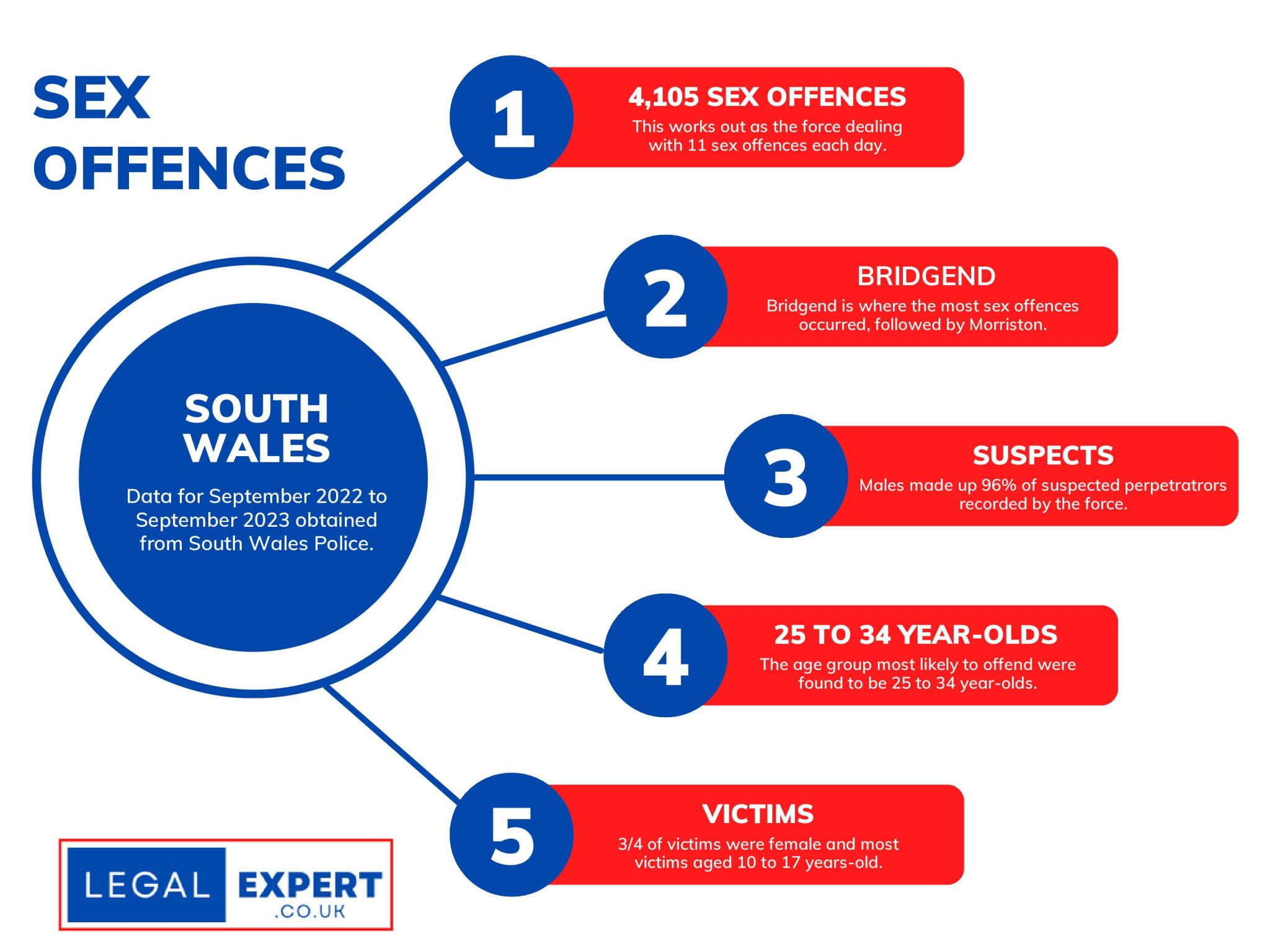
Around 11 sex offence incidents happen each day in South Wales.
A total of 4,105 incidents were reported to South Wales Police from September 2022 to September 2023.
Data provided by the force indicates that more sexual offences took place in Bridgend than anywhere else in South Wales, with the county accounting for 7% of all incidents.
Other areas that had high rates of sex offences included Morriston, Rhondda and Neath and Pontardawe (all around 5%).
Men were found more likely to commit a sex offence, with over 96% of offenders identifying as male. Additionally, more than three-tenths of offenders were aged 25 to 34 years-old.
In contrast, the majority of victims were aged 10 to 17 years-old (37%), whilst three quarters victims were girls or women.
Although 4,105 sex offences occurred, only 350 offenders were identified by South Wales Police.
Suffolk
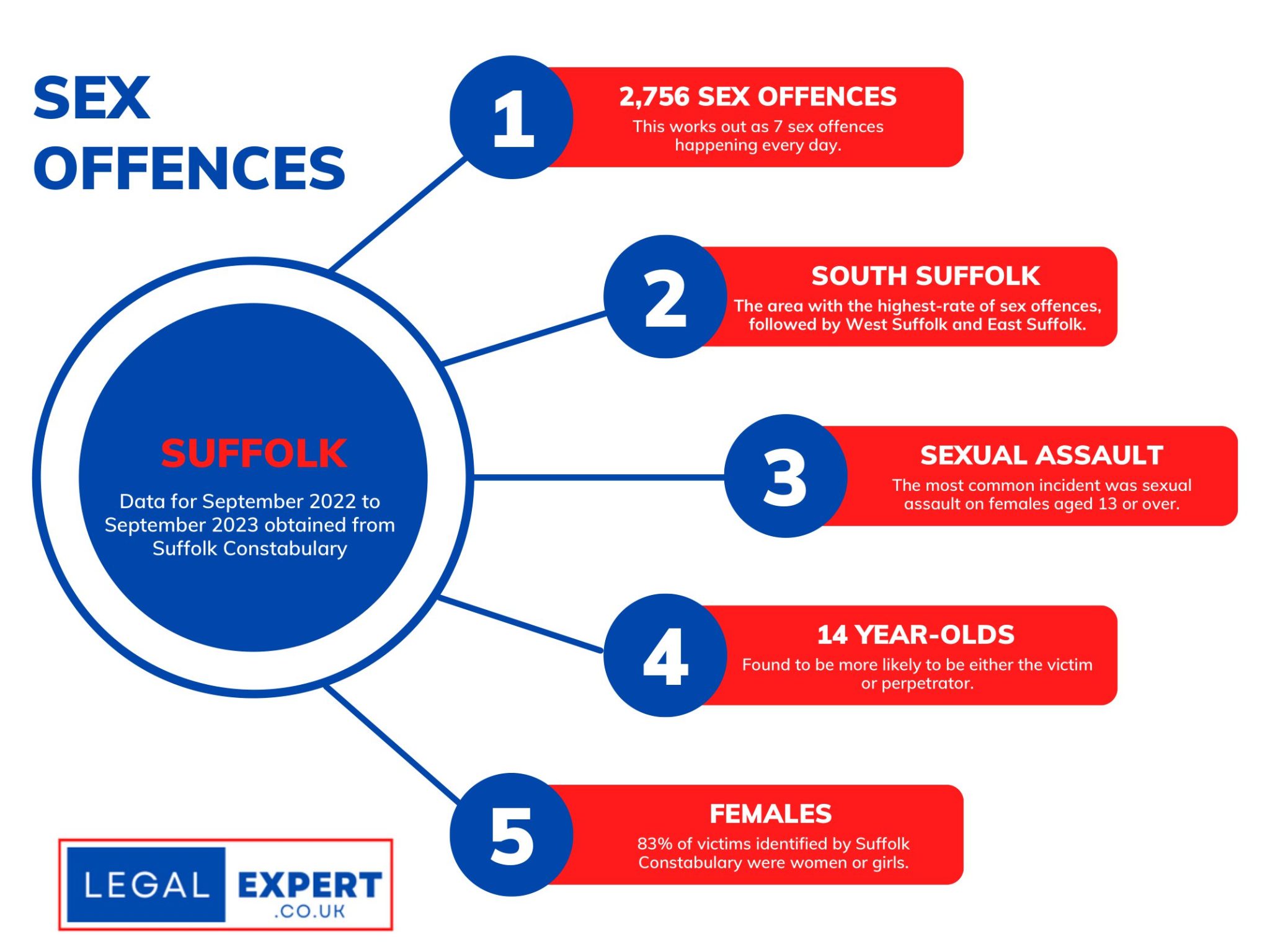
The majority of sexual offences that happened across the county of Suffolk occurred in South Suffolk.
Out of 2,756 incidents reported to Suffolk Constabulary, more than 43% happened in South Suffolk between September 2022 to September 2023.
Around 33% of incidents were reported in West Suffolk, whilst 21% occurred in East Suffolk.
The most common incident type involved sexual assault on a girl aged 13 or over (27%), followed by rape of a female aged 16 and over (23%) and sexual activity involving a child under 16 years-old (8%).
Girls and women were more likely to be targeted by sex offenders, accounting for 83% of all 2,600 victims identified by Suffolk Constabulary.
In contrast, males were the most commonly suspected sex offenders, making up 92% of all 1,989 suspects dealt with by Suffolk Constabulary.
However, 14 year-olds were found more likely to be either the victim or perpetrator of sex offences.
Tyne and Wear
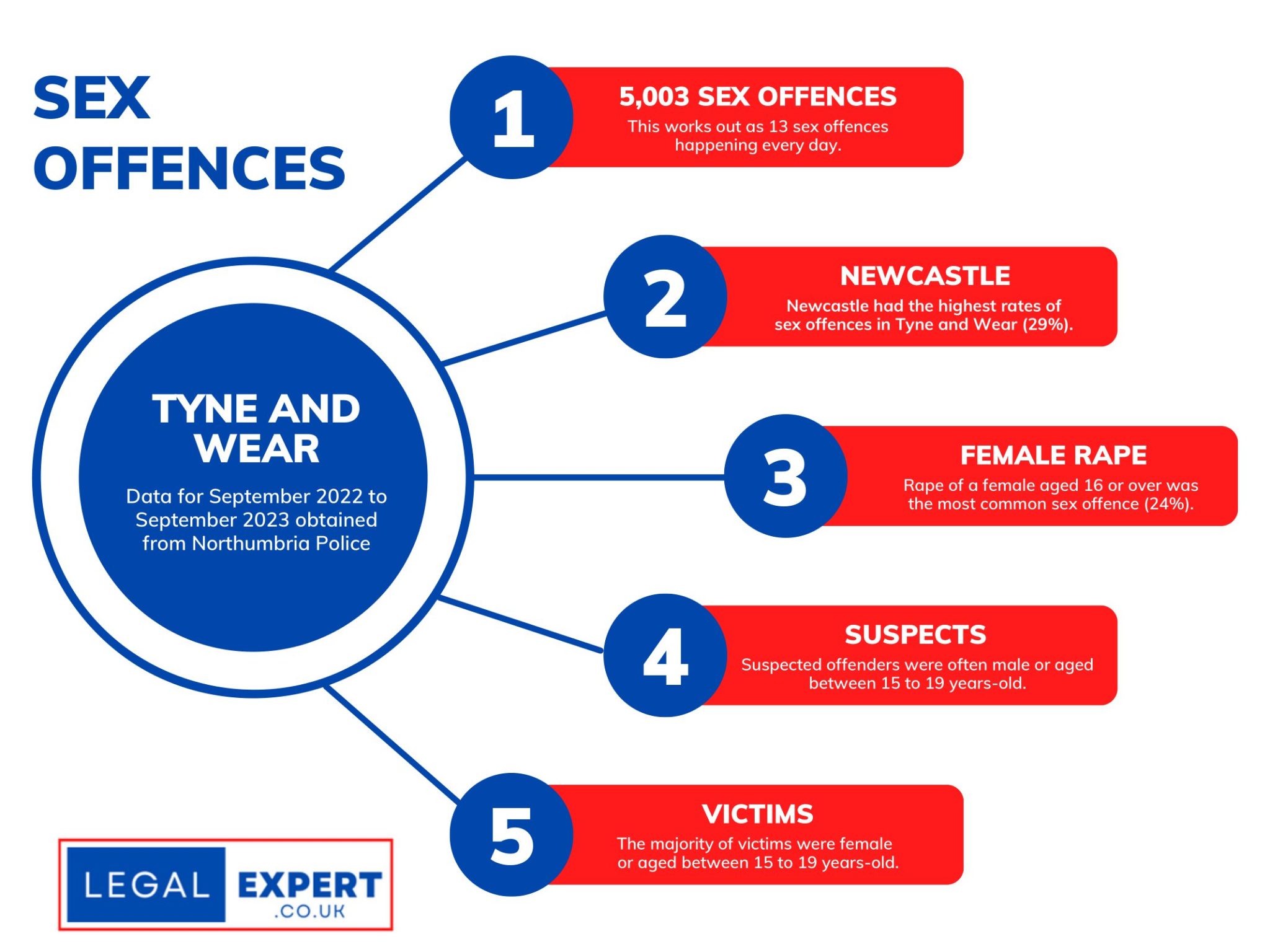
Newcastle has been revealed as the worst area in Tyne and Wear for sexual offences.
Out of 5,003 sexual offences recorded in Tyne and Wear from September 2022 to September 2023, 28.8% occurred in Newcastle.
Northumberland was the second worst area (19.3%) followed by Sunderland (17.2%), Gateshead (12.9%), North Tyneside (12.2%) and South Tyneside (9.3%).
The most common victims of sexual offences in Tyne and Wear were females aged 15 to 19 (17.6%), whilst males aged 15 to 19 were the most common suspected offenders (13.8%).
The most common sexual offence was rape of a female aged 16 or over (24.4%), followed by sexual assault on a female (22.7%) and rape of a female aged under 16 (5.5%).
Other common sexual offences included sexual assault by a male (4.4%), sexual assault of a female child under 13 (4.3%) and exposure incidents (4.2%).
West Mercia
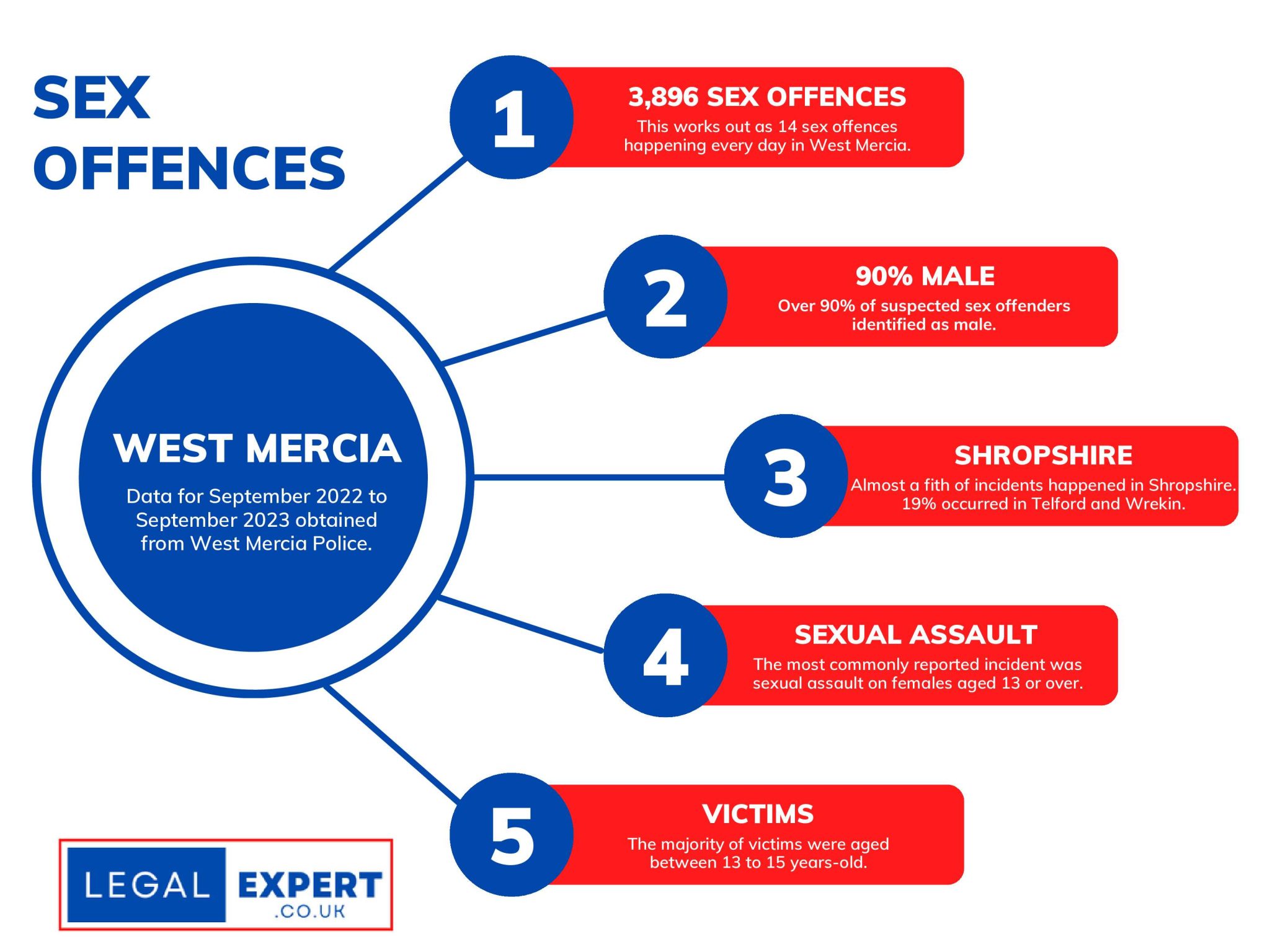
West Mercia Police dealt with 3,896 sex offence incidents last year.
October was the month with the highest rate of sex offences, with around 14 incidents occurring each day.
Around a fifth of incidents reported to West Mercia Police between September 2022 to September 2023 happened in Shropshire.
Other areas with high rates of sex offences included Telford and Wrekin (19%), Herefordshire (15%), Worcester (10%) and Wyre Forest (8%).
The most commonly reported sex offence was sexual assault of a female over 13 years-old, which made up almost a quarter of all incidents.
Another commonly reported sex offence was rape of a female over 16 years-old (23%).
Girls and women were found to be more likely to be targeted by sex offenders, accounting for 83% of victims recorded by West Mercia Police.
In contrast, more than 90% of suspected sex offenders identified as male.
The age group most impacted by sex offences were 13 to 15 year-olds, who had both the highest victim rate and highest suspect rate.
West Yorkshire
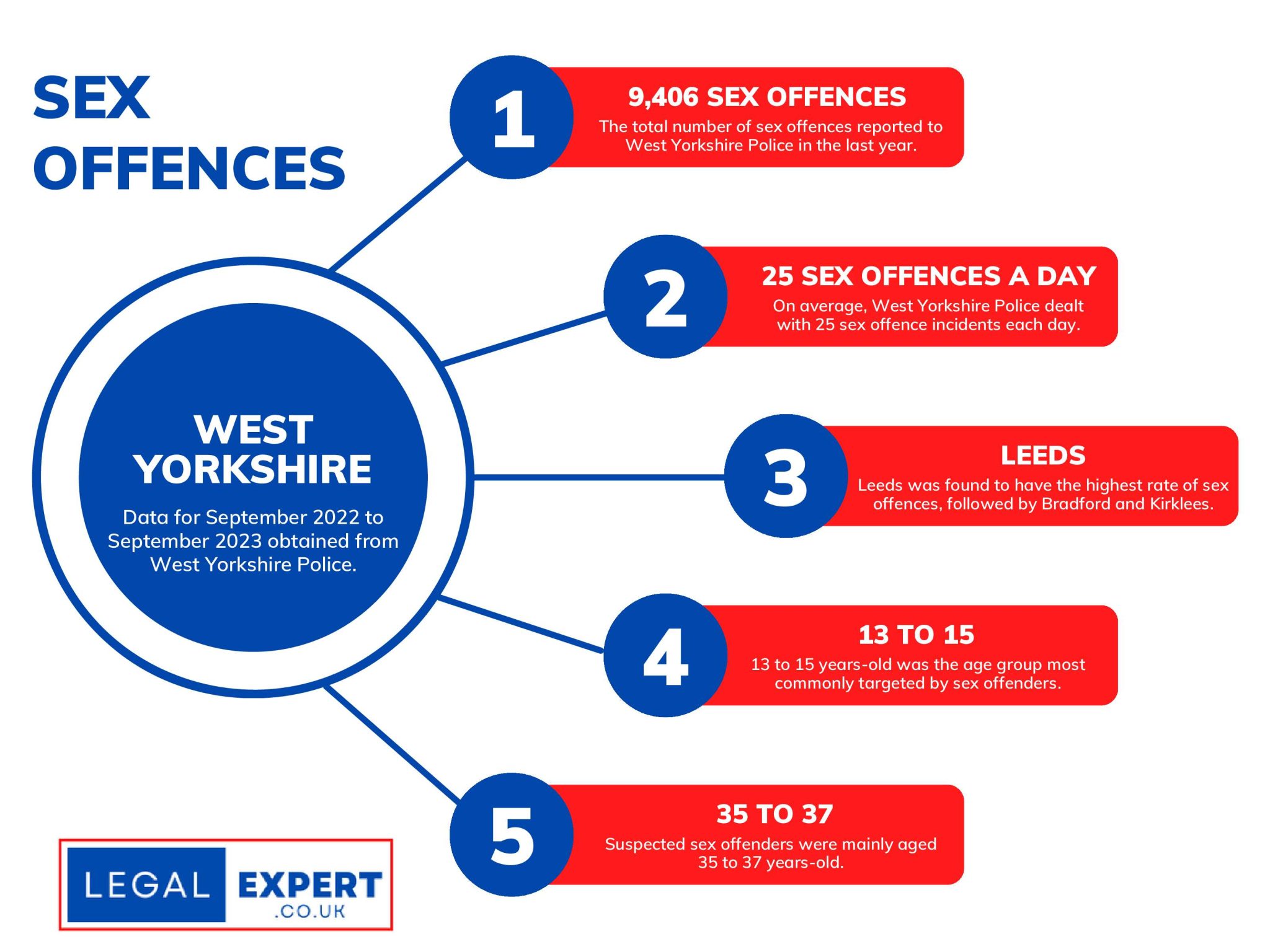
Around 25 sex offences happen each day in West Yorkshire.
Out of 9,406 incidents reported to West Yorkshire Police between September 2022 to September 2023, around 34% happened in Leeds.
Additionally, more than a quarter of incidents occurred in Bradford, whilst 16% of incidents were reported in Kirklees.
Wakefield followed behind, where 15% of sex offences took place.
The area where the least sex offences occurred was Calderdale (9%).
Figures provided by West Yorkshire Police also uncovered that rape made up 38% of all sex offence incidents that were reported in the same period.
Victims were typically aged between 13 to 15 years-old, whilst offenders were typically aged between 35 to 37 years-old.
Furthermore, the data indicated that girls and women were more likely to be targeted by sex offenders, accounting for 78% of all victims identified by West Yorkshire Police.
Wiltshire
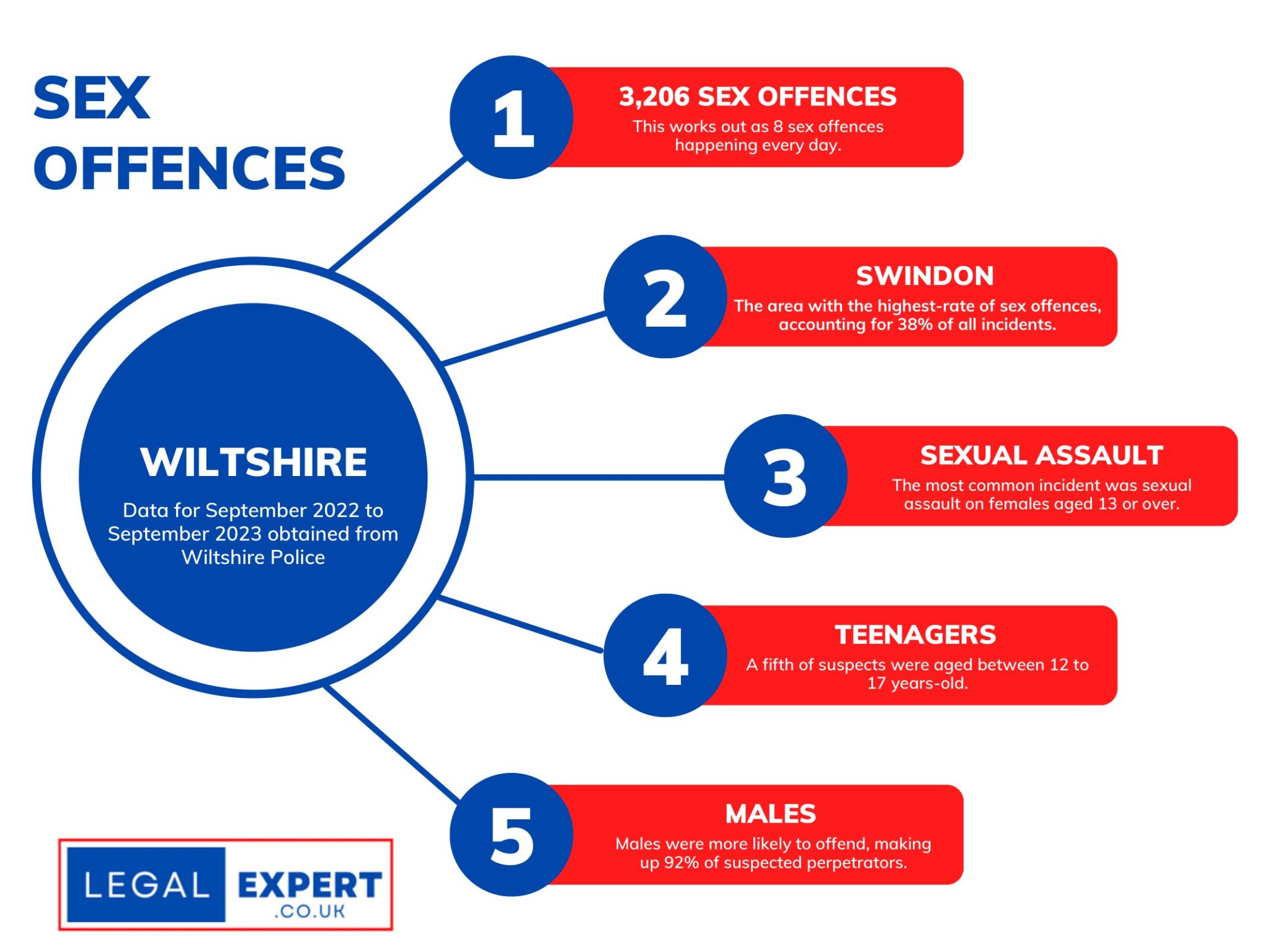
Swindon is where 38% of all sexual offence incidents in the County of Wiltshire took place last year.
Furthermore, out of 3,206 incidents reported to Wiltshire Police, the most common incident type was sexual assault on a girl or woman aged 13 or over (22%).
Another significant incident type was rape of a girl or woman aged 16 or over (17%).
Teenagers aged 12 to 17 were the most likely to offend, making up 21% of all perpetrators recorded by Wiltshire Police.
Additionally, the figures suggest that males are more likely to commit a sexual offence, with 92% of 1,348 perpetrators identifying as male.












